TECHNOLOGICAL TECHNOLOGICAL


HARROVIAN HARROVIAN





The Technological Harrovian is a pupil-led society that aims to provide a publishing platform for students to express their passion in various technology-related areas.
This year, we are excited to present articles within the theme - "Navigating the Intersection between Technology and Society".
Tiffany Wong
president & editor chief deputy editor in chief
Zoe Wong, Jamie Young
Allen Cheung
Sen Yi Mok
David Sun
Reyansh Rampal
writers editors
Charlize Mui
Tisha Handa
Nicole Lau
Jenny Yin
James Gui
Tiffany Wong
Felix Fan
Charlotte Chan
illustrators
Chelsea Jiang
Estelle Chan

3D bioprinting is an emerging technology in regenerative medicine that has become increasingly important in recent years, with a projected CAGR (compound annual growth rate) of 15 6%, reaching an estimated market value of $6 08 billion dollars by 2030 [1]. 3D bioprinting involves the layer-by-layer deposition of biomaterials to create complex biological structures like tissues and organs which have varied potential applications in fields such as drug testing, disease modelling, plastic surgery, cancer and more. Notably, 3D bioprinting could be revolutionary in solving the organ shortage crisis, especially in low-income countries like India, where over 160 thousand people are waiting for transplants and only 1% of them ever receive treatment [2].
The first instance of bioprinting dates back to 1988 when Robert J Klebe used an inkjet printer to deposit cells through cytoscribing (the technique in which cells are positioned in a predetermined, precise pattern) technology [3, 4]. This technology was later improved in 1999 when David J. Odde and Michael J. Renn used laser-induced optical forces to deposit living cells with micrometre accuracy [3, 5]. In 2002, the first “3D bio plotter” was developed by R Landers et al , which featured the first extrusion-based bioprinting technology. In the same year, Professor Anthony Atala successfully bioprinted a small-scale kidney [6] In 2003, W C Wilson Jr and T Boland developed the first-ever inkjet bioprinter, leading to the printing of 3D tissues (without any scaffolds) [3]. Throughout the years, significant strides were made in the field of bioprinting. In 2009, the engineering of vascular tissue and blood vessels was a success. In 2012, artificial liver and articular cartilage were printed, followed by the printing of bloodborne networks in 2014 [3, 7] The printing of a heart valve was achieved in 2016, and in 2019, the bioprinting of collagen human hearts at different scales was accomplished [3, 7]. The time taken for bioprinting organs has reduced dramatically through the use of different bioprinting strategies: a research team from Utrecht University managed to 3D bioprint a miniature liver (1.7 cm in length, 6 mm in diameter) in 180 seconds [8].
Over the past two decades, many bioprinting strategies have been used, including inkjet bioprinting, laser-assisted bioprinting, extrusion-based bioprinting, stereolithography-based bioprinting and magnetic bioprinting. Bioprinting strategies often involve the use of bio-ink, which is usually composed of living cells such as STEM cells, growth factors, extracellular matrix proteins (ECM) for support and one or more of the following materials: collagen, gelatin, alginate, chitosan or fibrin for scaffold or structure [9].
Inkjet-based bioprinting is based on the traditional inkjet process and involves forming discrete droplets and depositing them on a substrate, such as a hydrogel support or culture plate, in a precise pattern [3, 6].
There are two main ways to form droplets: continuous inkjet (CIJ) and drop-on-demand (DOD). CIJ makes use of the Rayleigh plateau instability to create bio-ink droplets by applying differential pressure to the bio-ink solution, which will then be guided by electric or magnetic fields [3] Although CIJ can generate droplets at a higher frequency, it requires conductive bio-ink, which could pose the risk of having non-uniform droplet sizes and contamination if bio-ink that is not successfully deflected is recirculated [3, 8] Thus, most researchers use DOD, which relies on thermal or piezoelectric actuators means to change the pressure, which in turn changes the volume of the droplets, allowing them to exceed the surface tension and move out of the nozzle [3]. Thermal methods involve rapidly heating bio-ink for a few microseconds (so that no other biocomponent is harmed) to create a vapour bubble to generate pressure whilst piezoelectric methods involve swiftly deforming a piezoelectric crystal (which is reversible) by applying an impulse voltage, creating tension through the acoustic wave generated by the crystal’s vibration [3, 8].
Inkjet-based bioprinting is quite advantageous as they are relatively cheap, has a high resolution of up to 50 µm, has high print speeds and can print a wide range of cells and structures [8, 10] However, the bio-ink used is limited to a viscosity requirement of 30 mPa/s, hence its low droplet directionality and restriction to vertical bioprinting [10].
Laser-assisted bioprinting (LAB) is the deposition of bio-ink onto a substrate using a pulsed laser beam [8]. There are many different mechanisms used in laser-assisted bioprinting, such as LGDW (laser guidance direct writing), BioLP (biological laser processing) and LIFT (laser-induced forward transfer) [3] However, this article would only focus on LIFT as LGDW is not very compatible with bioprinting and many other methods like BioLP or MAPLE-DW which are variations of LIFT (e.g. BioLP uses high voltage lasers; MAPLE-DW uses low-pressure pulsed lasers) [3].
The principle of LIFT is to shoot a focused pulsed laser (with ultraviolet or near ultraviolet wavelength) at the laser-absorbing intermediate layer (made of metals like gold or titanium or metal oxides) which is above the layer of bio-ink (which can be encapsulated in hydrogel or stuck to the biopolymer on the coat of the substrate) [3, 9]. This causes the sacrificial layer of metal to be vaporised, causing it to rapidly expand and creating a high-pressure bubble which propels the bio-ink onto the receiving substrate [8]. The top layer (made of glass or quartz) allows clear observation for more precise alignment and positioning, reduces contamination with the surroundings and acts as a flat and smooth surface for the UV light from the laser [3].
LAB is mainly used due to its extremely high accuracy (up to 1 cell per droplet, resolution of 5-300 µm), precision and high speed, which enables the bioprinting of multiple complex structures [3, 10]. It is also seen as advantageous as it is contact and
nozzle-free, avoiding problems like nozzle clogging or viscosity requirements, allowing for smaller droplets at higher concentrations [3]. However, LAB is quite expensive and has low scalability and reliability, as it is difficult to achieve consistent and precise printing as it is sensitive to external factors [10]
Extrusion-based bioprinting (EBB) is a pressure-driven technology that uses a nozzle to extrude onto a substrate in the form of microfilaments [3,10]. There are three main mechanisms to extrude the bio-ink: pneumatic-driven, piston-driven and screw-driven [3]. Pneumatic-driven EBB uses compressed air to dispense the bio-ink which is relatively faster; however, this requires a filter to sterilise the air and poses a risk of air bubbles inside the bio-ink [3]. In piston-driven EBB, a motor is employed to rotate a guide screw which linearly drives the piston. In contrast, screw-driven EBB uses a motor to directly rotate the screw. Both of these methods are often combined and generally more suited for the extrusion of semi-solid or solid biomaterials. Both methods also have a higher resolution compared to pneumatic-driven EBB but are volume restricted and harder to disinfect or clean [3].
Generally, EBB is seen to be suited for printing materials with very high cell densities or concentrations, compatible with multi-material bioprinting to produce complex structures that have mechanical properties [3,10]. However, EBB causes high shear stress which could damage certain types of bio-ink, has a limited resolution (where the minimum feature size is above 100 µm) and requires a nozzle [8,10].
Stereolithography-based bioprinting (SBB) is when a vat of bio-ink in a container is solidified layer-by-layer (typically on the surface of a scaffold) through the use of a laser (which uses ultraviolet or visible light) [10]. This occurs as the bio-ink solution contains photoinitiators, which are chemical compounds that react to form free radicals after absorbing certain wavelengths of light [10]. These free radicals then react with monomers of the material, causing them to become polymerised and solidified as they form polymer chains [10] Most researchers are increasingly turning to photoinitiators that absorb visible light such as lithium phenyl-2,4,6-trimethylbenzoylphosphinate (LAP) or materials that can crosslink through a thiol-ene reaction. This is because ultraviolet light, which was most commonly used as a photoinitiator, can damage the cells in the bio-ink solution and exhibit cytotoxic effects in higher concentrations [10, 11].
SBB is advantageous as it has a high degree of accuracy, very low printing time, does not produce any shear stress and has no limit on the viscosity of the bio-ink [8,10]. However, this complicated procedure requires lots of time for post-processing, is somewhat expensive and might lead to some damage to the cell DNA if ultraviolet or near ultraviolet-light wavelengths are used [8].
As the name suggests, magnetic bioprinting refers to assembling layers of cells onto a substrate through the use of a magnetic field [12]. These cells are usually magnetised through magnetic nanoparticles (MNP), which are generally composed of iron oxide, gold, and nickel, that bind with the cell membrane electrostatically [13]. After these cells are magnetised, they are enzymatically disassociated (separating cells from the tissue by breaking down adhesions between cells through enzymes) and transferred to a 3D bioprinting apparatus, where they are placed on a substrate on top of a neodymium magnet. [13]. Under the influence of the magnetic field, the cells aggregate into 3D structures [13].
Magnetic bioprinting is very useful as it is relatively precise and accurate, can be used for various cell types such as STEM cells, cell lines and primary cells, does not cause cell damage, is contactless and can create large-scale structures [12]. However, magnetic bioprinting is expensive, requires complex equipment, has limited resolution and some MNPs could damage cells in high concentrations.
Although there are many different alternatives to bioprinting that have the potential to change the medical field and solve the organ shortage crisis, this article will only focus on two of the more emerging technologies: xenotransplantation and hydrogel injection moulding.
Bioprinting is a promising alternative to xenotransplantation, which involves transplanting cells, tissues, or organs from non-human sources into humans. Bioprinting offers several advantages over xenotransplantation, including a much lower risk of rejection, the ability to create patient-specific tissues, and the potential for large-scale production without the need to breed and genetically modify animals [14]. However, bioprinting has not yet been tested on humans, unlike xenotransplantation, which has successfully transplanted kidneys into humans [15]. Additionally, bioprinting is more expensive than xenotransplantation, and there are ethical considerations surrounding the usage of STEM cells in bioprinting as they are obtained from embryos with the potential for human life.
Another alternative to bioprinting is hydrogel injection moulding. This technique involves injecting a hydrogel mixture (which has a similar composition to bio-ink) into a mould cavity and solidifying it to create a 3D structure through exposure to UV light (or heating, but this is rarer), which causes crosslinking, similar to SBB. Whilst injection moulding could be a much faster process (≈ 15-20 times as fast) compared to bioprinting, the resulting structures are less complex, limited in cell density and have a lower capability to generate structures with void spaces [16].
Overall, bioprinting’s main advantages lie in its ability to create complex, multimaterial structures with high accuracy, precision and resolution at a relatively cheap cost. Despite its advantages, bioprinting is relatively slower and has not been extensively tested in humans
In this article, I will focus on three main applications of bioprinting: drug research, skin regeneration and cancer treatment.
3D bioprinting has significant potential for the field of drug research, as it allows researchers to develop pharmacokinetic models to simulate the response of humans and predict any probable toxic or long-term risks of drugs [3] This is of particular importance for pharmaceutical companies as over $50 billion dollars are spent on research and development to get the FDA’s (Food and Drug Administration’s) approval for testing on animals and humans [8]. Compared to 2D cultures and animal testing, 3D bioprinting is faster, more reproducible and able to create custom models that match the target audience [17] Over the past two decades, many human models have also been successfully created: R. Chang et al. bioprinted an in-vitro liver drug testing platform in 2010 and Mao S et al bioprinted a construct that successfully tested against chemotherapy drugs (which included sorafenib, cisplatin, and 5-fluorouracil) in 2020 [3,17]. These bioprinted models can also be used to model different diseases without using animals or 2D cell cultures, making them an exceptionally valuable tool for drug development and safety.
3D bioprinting is seen to be revolutionary in the field of skin regeneration, with remarkable prospects in regenerative medicine applications, modelling physiological conditions and the cosmetic industry [18]. In the treatment of burn injuries or wound healing, 3D bioprinting can be transformative as 3D bioprinters can dispense bio-ink (which would form tissues) precisely and accurately in a custom pattern directly over the wound in less than two minutes [18,19] The bio-ink solution can also be modified to contain certain biomaterials such as mesenchymal stroma cells, fibroblasts, collagen I, fibrinogen, and keratinocytes which promote skin regeneration, wound healing (over 66% faster in mice) and reduced scarring [18,19]. There have also been successes in modelling physiological conditions through the bioprinting of tissues: Liu X. et al. were able to create disease models of Atopic Dermatitis (a chronic, inflammatory skin condition) in 2020 [18]. 3D bioprinting has been revolutionary in the cosmetic industry since animal testing was banned in 2009 3D printing greatly reduces the difficulty of the cosmetic procedure [18], and in recent years, it has been successful in reconstructing ears, nasal cartilage, breast implants and maxillofacial bones in a short amount of time. The printed parts can be customised according to the patient’s aesthetic needs and reduce the risk of error from a plastic surgeon [20].
3D bioprinting can aid cancer treatment in three ways: through the development of 3D tumour models to study interactions between the stroma and cancer cells, the development of personalised treatment for cancer and the delivery of drugs through biomaterials [17].
One advantage of 3D bioprinting in creating a tumour microenvironment is the spatial control of the external properties, the ability to integrate perfusable vascular networks (for studying the invasion of cancer cells through vessels) and its speed in producing a large volume of products [21]. As previously mentioned, due to the ability to customise bioprinted models, different types of tumour models have been successfully recreated, as shown in Figure 1 below.
In addition to using bioprinting to develop models or treatment, 3D-printed biomaterials such as alginate-based hydrogels have been used for local delivery to improve the efficiency of delivering drugs to help with breast, prostate and colon cancer [17].

In conclusion, 3D bioprinting is a revolutionary and advanced method that holds a promising potential to transform the field of medicine. Its ability to produce highly accurate, precise and complex biological structures has rapidly grown over the past three decades, leading to the development of more and more optimised bioprinting
Figure 1: A section of a table that shows 3D bioprinted cancer models and the cell types that have been used [21].strategies. 3D bioprinting has a variety of applications including drug testing, cancer treatment, and disease modelling and it also offers a highly optimistic solution to manage the organ shortage crisis: producing patient-specific tissues or organs with different scalability at a relatively high speed Overall, the progress made in 3D bioprinting technology has brought the possibility of personalised medicine closer to reality and will be revolutionising a multitude of fields in the future

"You have bad taste”. The offensiveness of this phrase is on par with derogatory slurs, and many discussions often become a personal attack carnival shortly after the phrase is thrown The phrase “beauty lies in the eyes of the beholder” is a commonly accepted notion, in the field of audio, there are objective criteria to assess audio quality. After millions of years of evolution, our brains evolved to have similar structures, resulting in shared characteristics of what is considered “good sound”. As a result, certain combinations of audio are often perceived superior to others. In this article today, we will focus on the field of audio and its generic term “Hifi”. By exploring the principles and components of HIFI, we can understand the objective values that contribute to the perception of a “good sound“
In the Cambridge Dictionary, HIFI (high fidelity) is defined as “the production by electrical equipment of very good quality sound that is as similar as possible to the original sound.” Whilst this definition implies that “good sound” is equivalent to the original (real) sound to some extent, these two concepts should not be easily confused. In this hobby, you can often hear people say that the authentic sound of instruments is unpleasant. They often claim that ‘sounds/equipment that have low distortion, and tonally balanced are more realistic, but suffer from sounding too “digital” and end up being less preferable.’ In this article, we will explore how these two factors contribute to high-quality sound.
A study conducted by Olive, Sean E. tested the legitimacy of one of these states by evaluating 13 speakers and the results are as follows:
Distortion refers to the altering or deformation of an audio signal's original waveform, resulting in a sound less authentic.
fig.1 [1]
Pink: Higher rating = Lower distortion
Blue: Higher rating = More preferred (better [subjective])
[Multiple regression model for predicting loudspeaker preferences]
From figure 1, we can see that there is a significant negative correlation between perceived distortion and preference. We can assert with confidence that the speakers who received the highest preference ratings tended to exhibit lower levels of measured distortion, on average Disproving the first statement of how low distortion is not equivalent to good sound.

Sean Olive’s study in 2009 “The Subjective and Objective Evaluation of Room Correction Products” testified to this claim, by aiming to find how much room correction products enhance or worsen the overall quality of reproduced sound as judged by listener preference and spectral balance ratings.
The provided graph (fig. 2) presents that, similar to results in distortion, a more balanced speaker tends to be preferred by listeners. The x-axis of the graph represents the frequency, and the y-axis represents the sound pressure level. The higher the part of the line is on the y-axis, the louder that specific part of the sound. For instance, the light blue line has a crest at around 1.7kHz and the lower frequencies are at a lower sound pressure level, meaning the speaker represented is perceived to have little bass and plenty of
upper mids, which is unbalanced compared to the other speakers A flat line would result in a neutral sound, with minimum influence on the sound reproduced. The neutrality makes it more “Hifi” as no particular frequency is emphasised over others.
Furthermore, the preference ratings in this study support the idea that neutral, realistic, and authentic sound is both subjectively and objectively superior.
The order in the room correction column is respective to fig 2 (RC2 = red line, RC2 = green line )
While the same conclusion about the amount of distortion can be drawn with headphones, headphones that are balanced should not have a flat frequency to sound pressure level graph (unlike speakers). To understand the difference, we must discuss the Harman Target Curve. This curve is obtained through consumer preference research aimed to find out what sound people prefer. But it is more than simply sending out a survey and asking “What do the people want to hear?”. There was a foundational premise that this research was based on and it is that “good sound is equivalent to good (most preferred speaker in fig. 2) speakers in a regular listening room [3].
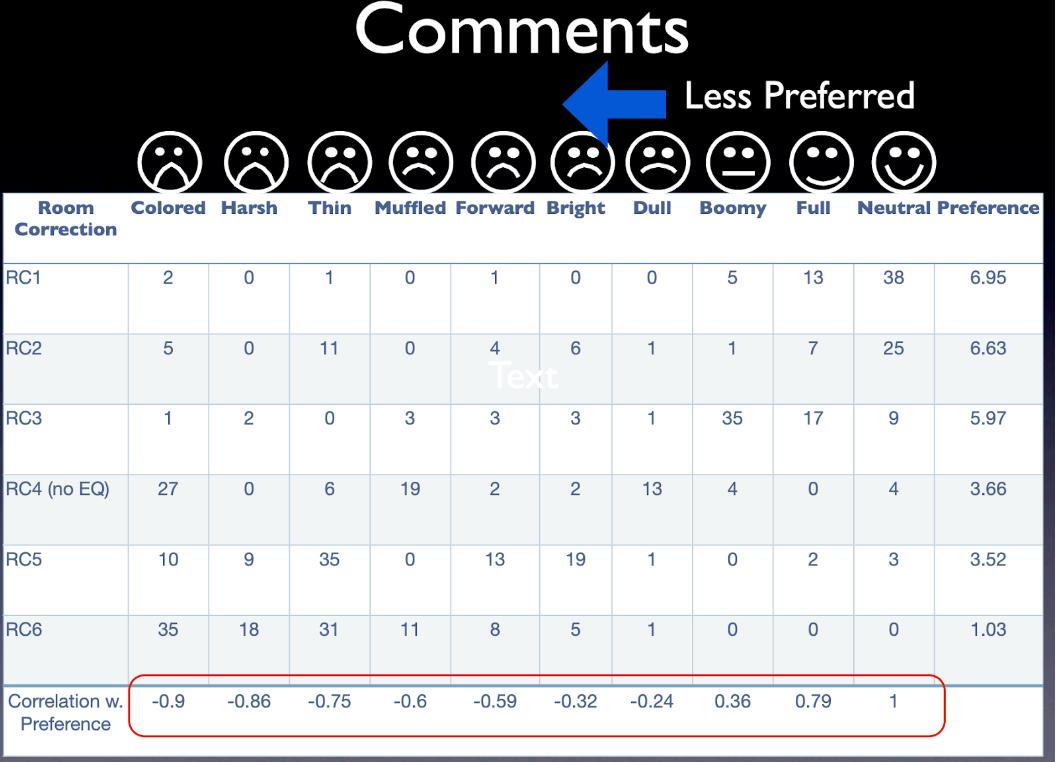
 fig. 2 [2]
[Olive, Sean E, et al. The Subjective and Objective Evaluation of Room Correction Products. 1 Oct. 2009.]
fig 3 [2]
fig. 2 [2]
[Olive, Sean E, et al. The Subjective and Objective Evaluation of Room Correction Products. 1 Oct. 2009.]
fig 3 [2]
The environment is characterized by a reverberation time of approximately 0.4 seconds, which is akin to the reverberation time found in professional recording studios and is not entirely reverberant nor completely anechoic When listening to speakers our ears are not the only thing involved, sound goes through a lot of physical mediums before it finally arrives at our eardrums so our entire body also interacts with the signal To see how the
the premise will translate to headphones, they used a head and torso simulator (HATS) to record sound waves and selectively remove certain components on the HATS system [6], so we can know how each body part will affect how the sound is perceived. This explains why the black curve in fig 4 was preferred and is perceived to be neutral
The x-axis represents the frequency and the yaxis represents the loudness. The graph showed that our ear naturally amplifies the sound around the 3kHz region. Based on this, they then had a group of individuals consisting of 6 trained listeners and 3 untrained listeners adjusting the levels of bass and treble on a headphone to obtain the Harman target curve; This essentially represents the ideal headphone sound pattern which is shown in this frequency response graph (fig. 5).
This graph demonstrates how theoretically an ideal sound includes boosted treble and elevated bass shelf
Two years later, the study went on to investigate with a total of 249 listeners They were requested to adjust the bass and treble levels of a headphone to their preference. The headphones had been adjusted to match the flat in-response of the loudspeaker in order to improve and reassure their previous findings (fig. 6).
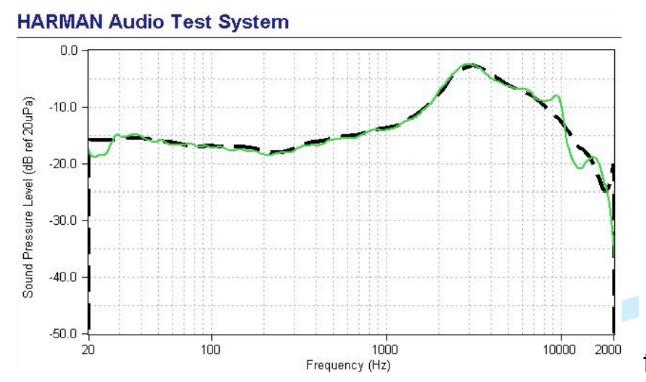
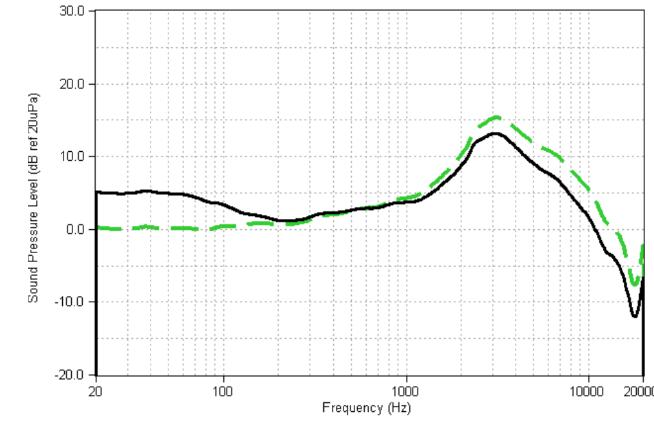
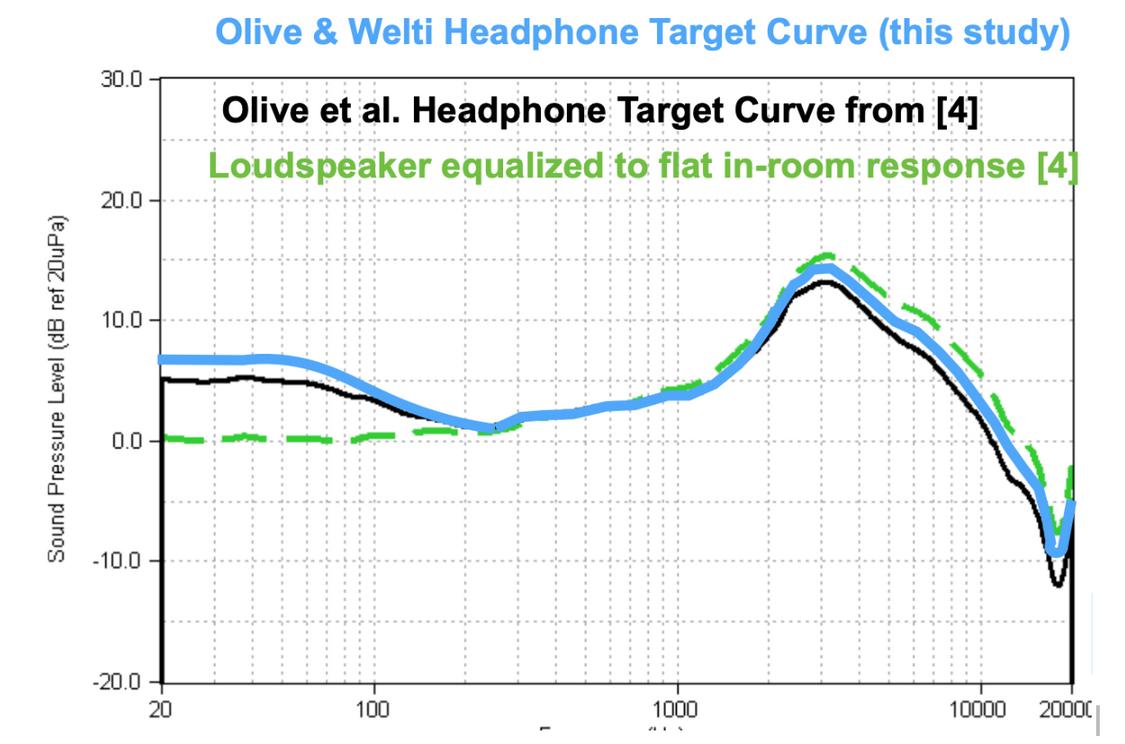
Initially, these results may raise some concerns. As seen from the graphs above, past 3kHz, the graph is going in a smooth gradual downward gradient. This can be problematic as the human ear treble response is not a unified smooth slope but with many peaks and dips within the decline The smooth curve in Harman is more or less a compromise for this issue. If the curve were to reflect an accurate graph with peaks and dips in the corresponding regions, it can lead to an offset of the treble response, causing a gain of a few dB (decibels) to dozens dB, bringing unwanted harshness and sibilance into the sound. This can be due to differences in ear fitment or natural variations in the ear anatomy. Until adaptive algorithms become more prevalent and advanced, the smooth curve of the Harman target can be considered a necessary compromise
Listeners’ preferences varied with different factors such as listening experiences, age, and gender. However, just because the segmentation of listeners and differences between individuals exist, it does not make the Harman target curve any less meaningful. Commonalities between preferences of sound are definitely prevalent Similar to the monitor industry, just because preferences exist, industrial colour gamuts standards such as NTSC and sRGB still remain to be extremely important
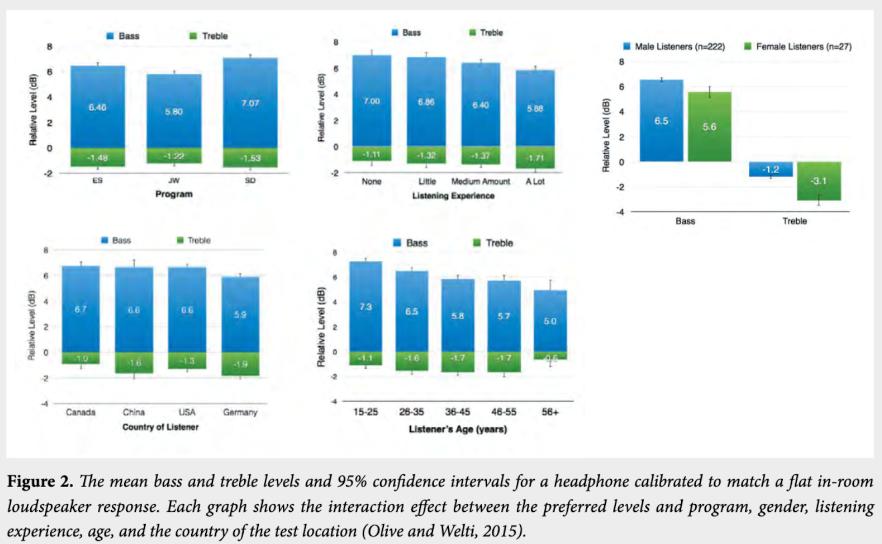
These weaknesses of the Harman target are emphasised when designing a product. Considering the characteristics of the drivers inside the headphone, or the chassis itself, the frequency response of these headphones will inevitably deviate from the ideal Harman target. This deviation may be more pronounced in wired headphones without electronic DSP components to alter their acoustic characteristics accordingly. Therefore, while the Harman Tangent Curve is an adequate standard, not every headphone should match it to a tee. Instead, it should act as a guideline for headphone manufacturing.
To summarize, lower levels of distortion and balanced frequency responses tend to be preferred by listeners, as demonstrated by the studies from Sean Olive. While the pursuit of good sound quality can be subjective, research and standards such as the Harman Target Curve can provide valuable insights and guidelines for manufacturers and consumers alike.
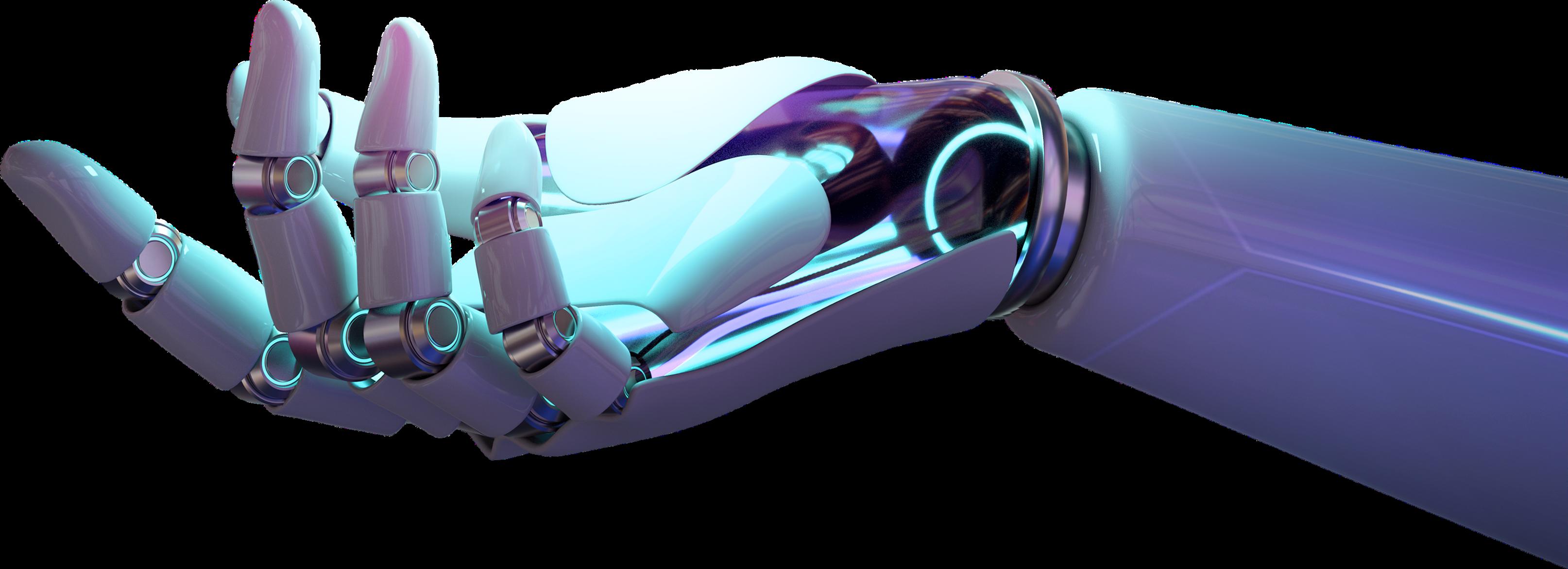

The term “Artificial intelligence” was introduced by world-renowned mathematician, John McCarthy, in 1956. McCarthy defined the term as the “science and engineering of making intelligent machines”, where intelligence means the ability to learn, conform, and execute tasks and techniques provided to attain a specific outcome [1]. AI is essentially developed through complex coding algorithms which mirror human skills such as problem-solving, decision-making, planning and learning [2]. At certain times, it is difficult to notice the extent to which AI is incorporated into our daily lives; features such as email spam that filter out large amounts of junk are easily overlooked as mundane. Additionally, social media AI algorithms are responsive to our behaviour online by regurgitating content that aligns with our interests In essence, AI has already solidified its roots within today’s landscape [3].
Over the past decade, the adoption of AI has skyrocketed throughout numerous industries, leading to rising concerns over potential job displacements. According to a report by Goldman Sachs, the mass adoption of AI could replace around 300 million full-time jobs, which is equivalent to a quarter of the workforce in the US and Europe [4] . Sectors such as administrative and legal are likely to be impacted the most by the adoption of AI, where 46% and 44% of tasks in each respective sector could be automated [4] . Proponents of generative and process automation AI purport that it is a vessel for higher levels of productivity and economic growth. When looking at specific use cases, it is decisively easy to focus on how AI could bolster a higher rate of economic activities. A recent study by Mckinsey has put forth that AI could ramp up global economic activity by around $13 trillion by 2030, which is equivalent to 16% higher cumulative GDP compared with today [5]. In the case of generative AI as mentioned above, the principle advantage is that it can simplify complex tasks and replace repetitive tasks so that workers could redirect their time to other work, which in return spurs economic activities. Whilst this notion typically rings alarm bells towards the negative effects it could have on jobs, in the long run, AI technology could in fact create more jobs [6]. Goldman Sachs further states “60% of workers today are employed in occupations that didn’t exist in 1940, 85% of employment growth over the last 80 years is explained by the technology-driven creation of new positions.” (aei.) In theory, the advancement of AI could result in the creation of new industries, and sectors and thus, a demand for new occupations. However, an important caveat is that the material impact of AI on the economy will take time to come to fruition. (Mckinsey) We are likely to see headwinds in widespread adoption by state actors and its benefits will not be linear. Below are a few snippets of AI’s role and use cases in different industries to help paint a better picture of the landscape today
The technological progression of AI has had a profound impact on the automotive industry, with Tesla leading the way in its self-driving capabilities. Tesla’s autopilot includes features such as autopark, autosteer and auto lane changing Although Tesla advises that there should be active supervision while using the autopilot features, alternative autopilot car suppliers have strived to accomplish full autonomy for their self-driving vehicles. For example, Telia, a Swedish multinational telecommunications company and mobile network provider in Finland collaborated with ride-sharing company Elmo, where Telia’s 5G connectivity enabled Elmo to deploy its vehicles to Estonia’s streets. Electric vehicles (EVs) are remotely driven to Elmo users’ doorsteps, allowing customers to immediately start using the vehicle and end the rental session anywhere without finding parking, minimising the time for both parties and allowing Elmo to serve more customers in a day Elmo believes that vehicles can be delivered entirely remotely without an extra driver watching over the process once remote drivers have gained enough experience [7]. Remote drivers are expected to undergo training and pass a remote driving test to perform this task, which is a solution for displacements - replacing mundane tasks with AI while introducing new jobs.
In November 2022, ChatGPT was released to the public and caused a global uproar Most notably, users quickly noticed its easy-to-use interface and efficient and coherent responses. At first glance, ChatGPT poses as a helpful and user-friendly tool for people who need quick information. In the academic realm, teachers began to utilise essays from ChatGPT as material for students to learn from, as well as minimising the time and energy spent developing tests and quizzes for students [8] This time could then be redirected to helping students directly by providing personalised feedback and one-toone help.
However, an over-reliance on ChatGPT in academic settings has sparked heavy backlash on its effects on academic integrity. Within the initial stage of ChatGPT’s release, reports found that many students had utilised its technology to write their essays to later be submitted as the student’s own work This phenomenon resulted in distress for the education system as there was no technology to distinguish between a piece of work that was produced by ChatGPT as opposed to a student. Subsequently, countries including Russia, China, Cuba, and North Korea have banned the usage of ChatGPT. Opponents of such ramifications were quick to create technology that can detect ChatGPT written works in order to prevent students from committing academic dishonesty.
On the other hand, when assessing the scope of ChatGPT in a business setting, the deployment of ChatGPT can ameliorate many inefficiencies, automating certain tasks while workers are engaged to develop skills for higher value tasks.
Allen & Overy, a top global law firm, is using Harvey AI to draft documents for clients whereas David Wakeling, head of the firm’s markets innovation group, ensured that Harvey AI will not replace any workers, instead using it as a catalyst to accomplish tasks more efficiently [9]
5. Not a straight road ahead…
The positive economic returns of AI will not be immediate but is more likely to ramp up at a burgeoning pace over time. The rise of ChatGPT has made this more evident and alarming, as it could potentially replace white-collar jobs that require more human skills. Additionally, the increase in AI activity has led to cases of over-employment among those who have access to it Therefore, widespread adoption and integration of AI will disrupt economic activity in the short term. However, in the long run, its stabilisation will yield economic benefits Some activists are calling for a pause in AI research and development to allow for relevant legislation to be put in place. As history has shown, although many jobs have been replaced by AI, more will also be created.
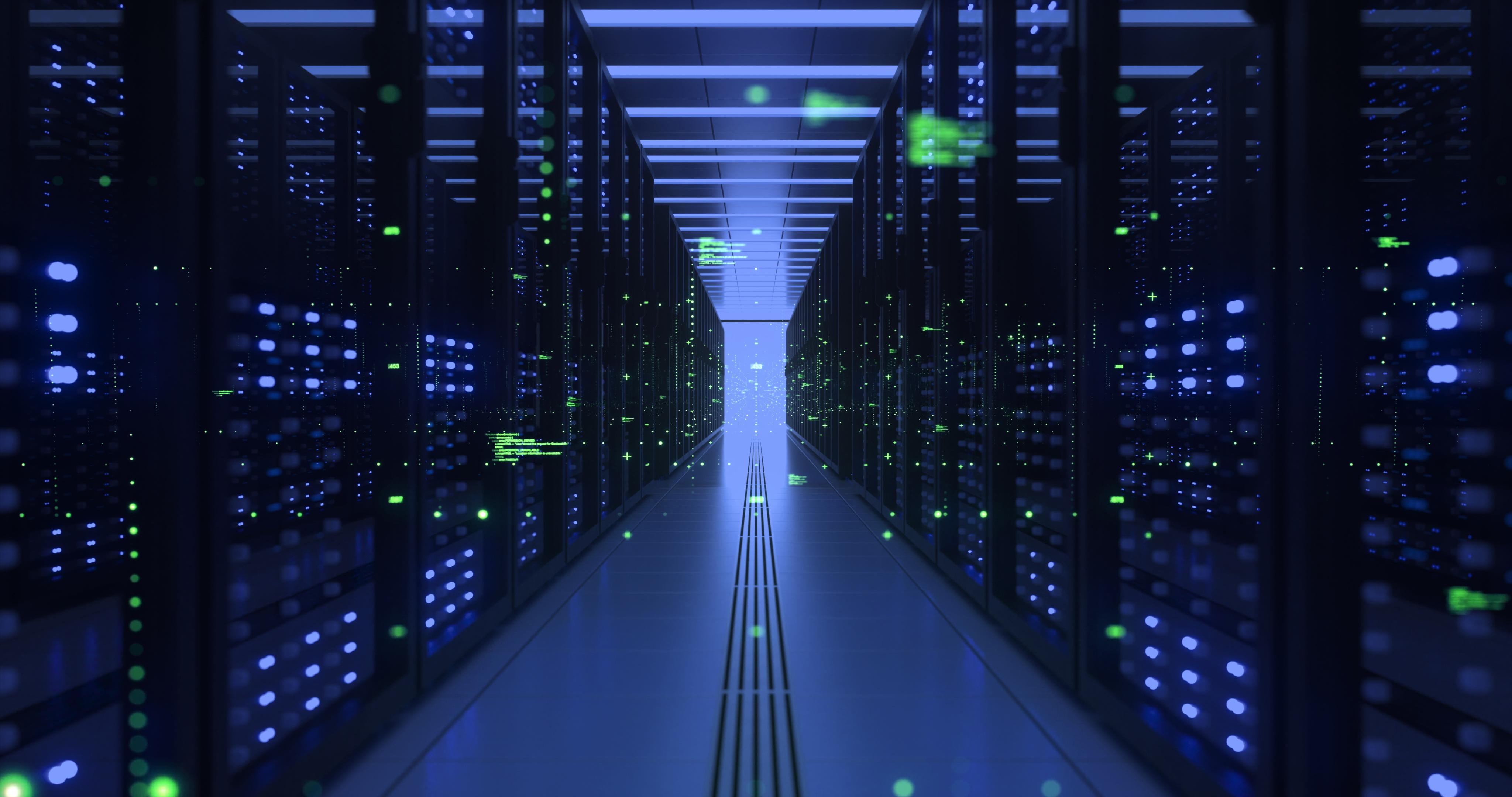
Commodity money, commodity-backed money, “fiat” money, public money, private ledger- Money has had several forms throughout history. Commodity money consists of items such as gold, silver, or copper coins, and this currency is the simplest of its kind. Commoditybacked money was the next step- where logical, private, and central banks would keep gold in their storage vaults- with
gold being known as the commodity- and there would be a conversion to paper money which would allow you to redeem the commodity from the vaults. This function made it less prone to inflation as banks could not print or produce more of the resource and create artificial value. However, this system failed when the last commodity-backed monetary system, the gold-exchange standard that started in Bretton Woods, ended in 1971 when the US closed the gold window, meaning all paper circulating the world that allowed you to redeem your gold was now deemed ceased by the US government This led to the paper now becoming the money itself What we use now is called “fiat money” where its value is derived from supply and demand.

Nowadays, we are seeing new alternatives being introduced in the modern era The two more recent types of money are public and private ledger money. Public ledger money is based on ownership being public for everyone to see, and everyone being able to see all transactions. The transactions on the blockchain can only be identified by a string of alpha-numerical code known as a public key. This key makes bitcoin transactions pseudo-anonymous, meaning that others can look at your transactions and holdings, but they cannot ascertain the real-world identity behind the public key. A form of private ledger money is the central digital bank currencies These will act as the digital form of the country’s fiat currency. The main feature of this type of money is that only the bank can see the properties of individuals’ money ownership and transactions, resulting in banks' centralized control of the currency.
It is a huge indicator that money may be facing a major paradigm change when the number of countries that adopt the system grows The People's Bank of China (PBOC) has been testing its digital yuan (also known as Digital Currency Electronic Payment or DCEP) since 2014 and has conducted several large-scale pilots in major cities across the country [1]. The digital yuan is expected to become the first major CBDC to be launched on a large scale. The central bank of Sweden, The Riksbank, is currently testing an e-krona CBDC in a pilot project that is expected to run until 2022.
The e-krona aims to provide a digital complement to Sweden's existing cash infrastructure. The Central Bank of The Bahamas launched its Sand Dollar CBDC in October 2020, making it one of the first countries to introduce a CBDC. The Sand Dollar is aimed at increasing financial inclusion in the country, particularly in remote areas where traditional banking services are not available.
The European Central Bank (ECB) is exploring the possibility of launching a digital euro and has launched a two-year investigation phase to explore the benefits and challenges of such a project. The digital euro could be used to complement cash and traditional electronic payments and would be issued and controlled by the ECB [3]. Lastly, the Federal Reserve of the United States
is currently conducting research and experimentation on CBDCs but has not yet announced any plans to launch a digital dollar. Chairman Jerome Powell has said that the Fed will take a cautious approach to CBDCs and will focus on getting it right rather than being the first to launch. As many countries are pegged to the USD and a major influence on what a dynamic economy looks like, this decision will be very important to how the rest of the world will face CBDCs [4].
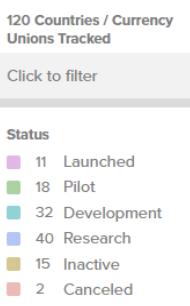
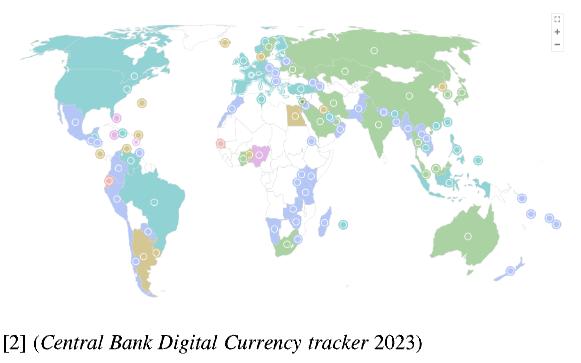
Trends show we are shifting away from cash and into a much more integrated and digital economy:

If you are less aware of the current affairs of digital currency, it is easy to mistake one for the other, after all, they are a form of online exchange payment currency. It is important to first note that CBDCs are a type of digital currency that is issued and backed by a central bank, whereas cryptocurrencies are decentralized digital currencies that are not issued or controlled by a central authority CBDCs are generally considered legal tender and can be used to pay for goods and services just like physical cash, while cryptocurrencies are not yet widely accepted as legal tender. Furthermore, CBDCs are subject to existing financial regulations and will be issued and controlled by a central bank, which may have more control over their use and circulation. Cryptocurrencies, on the other hand, are often unregulated or subject to less stringent regulations. Blockchain technology will likely also be used by CBDCs, but will differ from cryptocurrencies in terms of the specific technology used and the level of decentralisation- CBDCs may use a more centralized form of blockchain technology to allow central banks to have greater control over their issuance and circulation which is the key difference between these two systems. In terms of privacy, CBDCs may offer more security than traditional payment systems, but may not offer the same level of privacy and anonymity as cryptocurrencies Cryptocurrencies often offer more anonymity, but can also be used for illegal activities, which is a concern for regulators, the social security of the country, and the circulation of money in the country
benefits and costs to society
CBDCs mark another important evolution in the way our world’s systems work More and more of the world have seen its advantages and logically has begun to adopt its benefits:
CBDCs are far more financially inclusive. Those that are unbanked or underbanked may now receive more accessible means of support. The underprivileged, the underprovided and the less fortunate are given a helping hand; they can have more opportunities that the fiat system would work negatively against As a component of this, financial services would improve dramatically, as they can allocate aid efficiently. Efficiency would improve alongside this- CBDCs could potentially facilitate faster and cheaper cross-border payments, which reduces the need for intermediaries and would therefore increase the efficiency of the payment system. In regards to combating inflation, monetary policy may be more effective: The central bank will have more direct control over the money supply and will facilitate the implementation of unconventional monetary policy measures This similarly would mean that financial stability risks will fall: CBDCs could potentially reduce the risk of financial stability issues arising from the failure of financial intermediaries, as they would provide a direct liability to the central bank. This would increase business confidence and elicit more investment in the economy. Finally, as with any blockchain, security will be stronger. It would provide a more secure means of payment, which reduces the risk of fraud and cyber-attacks.
The main negative perception of CBDCs is that it is simply a “government-issued cryptocurrency” which defeats the purpose of crypto which is decentralisation- the increasing number of nodes which is what allows for it to have such a firm level of security It is important to also consider the unpleasant history that people have had with banks and the government. If we take a look at infamous cases in the past such as the Teapot Dome scandal, the Watergate scandal, and the Iran contra affair, all show that there is reason to be cautious over government control on all money transactions, ownership, and supply. The more control you have over money, the tighter your grip on laws. This means that the government will have more control over exercising money, which essentially means more control over everything. This will lead to the ability to have full control with zero certainty of accountability Encroachment on privacy rights is another major concern, as CBDCs most certainly will allow for and cause unprecedented levels of spying on the privacy of citizens All transactions logged into a major database mean everything can and will be observed. CBDCs also pose several potential risks and challenges. One concern is that CBDCs could threaten financial stability by encouraging bank disintermediation and reducing the availability of bank deposits, which could undermine the traditional banking system.
Additionally, CBDCs could enable new forms of illicit activities, such as money laundering and terrorism financing, which also raise privacy concerns if they collect and use personal data. Unstable monetary policy is a very large concern as well. As a proposed benefit of CBDCs, being that it will be easier to implement fiscal policy, it has several implications for financial stability Since central banks control the supply of CBDCs, inflation is a genuine risk. Excessive monetary policy will inflate the circulating supply of digital currencies, directly resulting in massive hyperinflation [5]. Blockchain also allows for cross-change money exchange, which is still a controversial adoption, but its technology can and already has brung upon unique advantages to CBDC and financial systems:

However, these concerns may be irrelevant as the driving force behind what financial system will be adoptedbut how countries view the most efficient way to allocate resources. The world has already moved past the stage of entering the world of digital exchangewe now move into the world of further development into its most optimal form It seems inevitable that CBDCs will become a fundamental part of an exchange- so it is essential to understand what it is so that perhaps we may yet again find a new alternate system in the future that weighs both public interest and individual securities.
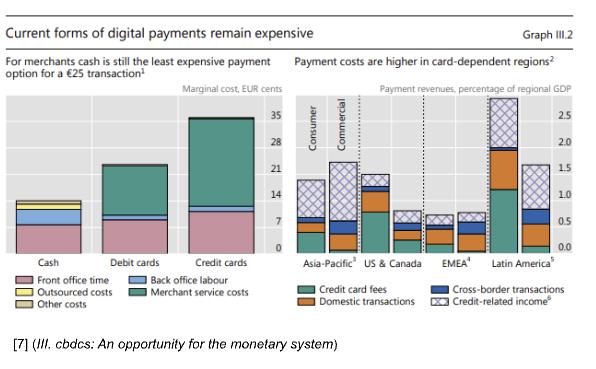
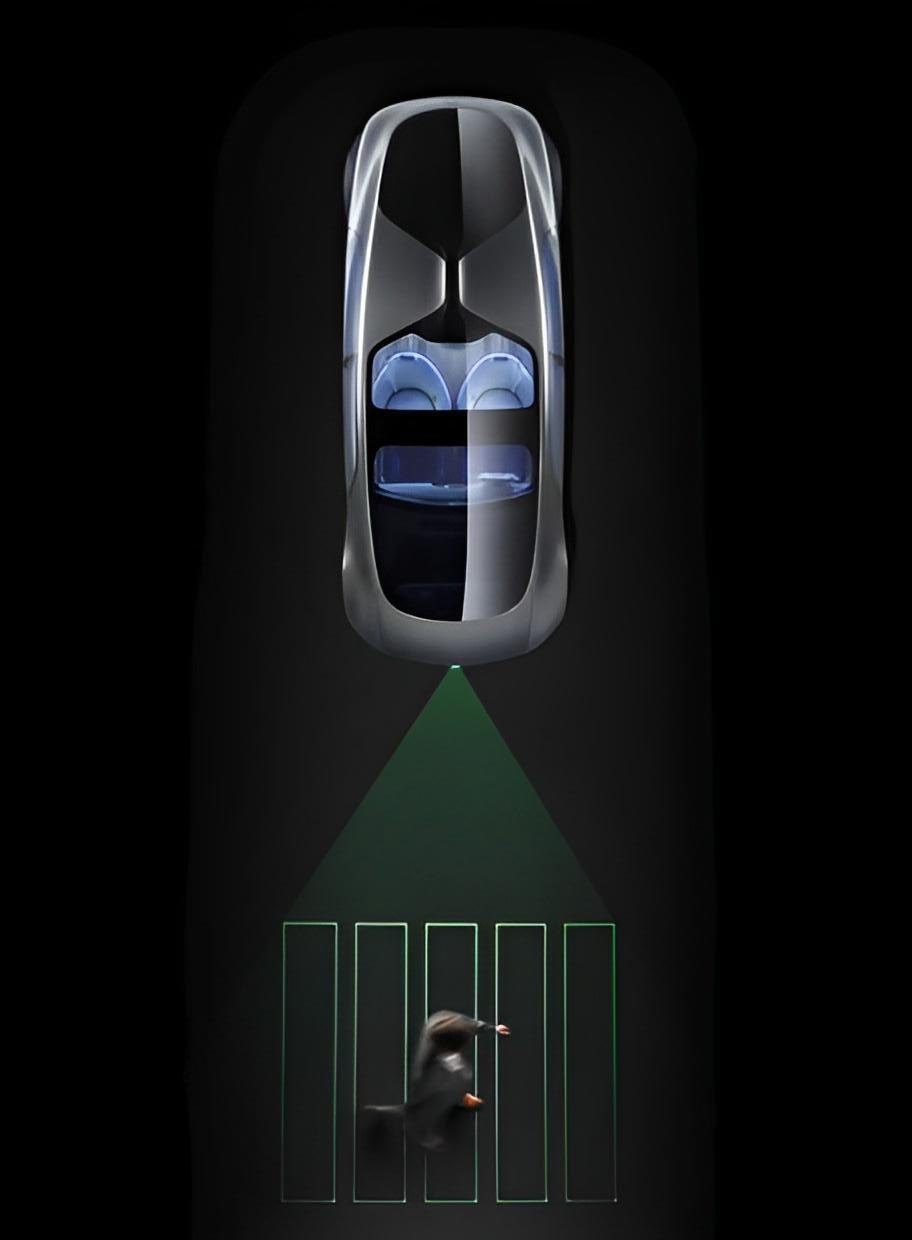
As of 2023, more than 600,000 automated vehicles (AVs) are on roads in the USA alone [1]. As AVs become more integrated into society, it has created division within the public, with many questioning the ethics surrounding cars operating without human supervision. While the Government tries to catch up with legislation, concerns continue to arise regarding the safety and ethical implementation of AV
On a pleasant day in the US, Dr Will Varner, a 59 -ear-old anesthesiologist, just left work and was driving home down a busy freeway. Feeling tired, he activated the trusty copilot programmed into his car to take over the wheel which has hundreds of hours of experience and has never made any mistakes, let alone caused any accidents. The man’s eyelids started to close; when suddenly, the car slams head-first into the side of a firetruck, resulting in his death. [1]
‘Tesla driver killed after ploughing into fire truck on Northern California freeway’ is what major news networks reported in the US after the collision. However, it is worth noting that there are more than 46,000 traffic-related deaths per year in the USA [7], and those incidents would never be reported on the headlines of national news if the drivers of the vehicle are as nuanced as an AI.

Before and during the 2000s, a majority of fatalities were attributed to human error, whether due to the failure to react in time or poor decision-making in difficult situations Many have sought to solve this, but how could they eliminate errors made by a human? How about an automated vehicle fitted with state-of-the-art AI as its decision-maker? This surely will eliminate the errors that a human driver would make. This technology has been hyped as a solution to this problem, with promises like fully automated vehicles roaming the streets by April of 2019, as said by Elon Musk [9].
This is just one of the many examples in which society's distrust and fear of AI has been projected by the media. If the driver wasn’t killed by an AI program, the headline would not have gotten as much momentum as it should have, and there would not have been as much scrutiny involved.
According to The Verge [10], 3 in 4 Americans believe autonomous vehicle technology
“is not ready for prime time.” 48 per cent said they would never get in a taxi or ridesharing vehicle that was self-driving and a further 20 per cent think autonomous vehicles will never be safe.
On the flip side, 34 per cent think the advantages of AVs will outweigh the disadvantages whilst 18 per cent are eager to get on a waitlist for the first AV. The majority opinion clearly demonstrates the trust issues displayed by the general public regarding autonomous driving technologies The new technology was promised to be a tool that decreased human error on the road which causes approximations for about 90 % of all road incidents
The first step of autonomous vehicle driving is determining the path it would take to get from one place to the other, this uses a technique called hybrid navigation which involves using multiple navigation systems for location determination, which includes GPS data of the paths, vehicle speed sensors and terrestrial signals. To determine the movements of the vehicle from its start to its destination, it is also used in combination with topology data and high-definition satellite imagery of locations. After identifying the paths, it controls reactions in specific environments, which includes the perception of the surroundings and advanced car control. The second step entails detecting and mapping the environment around the vehicle; it would require the use of laser navigation, radar navigation, and visual perception [2]
LIDAR is a popular laser navigation system used in autonomous vehicles. It emits a continuous laser beam or pulse to the target, and a reflected signal is received at the transmitter By measuring the reflection time, signal strength, and frequency shift of the reflected signal, spatial cloud data of the target point is generated. There are 3 types of LIDARs, single line, multiline and omnidirectional. The most popular one for self-driving vehicles is omnidirectional LIDAR, as it creates a much more detailed map of the terrain. However this has many drawbacks such as the fact that the attention to detail means that it would be too slow for an algorithm to generate a real-time response to traffic for example, in addition, LIDARs are extremely expensive with many ranging upwards to 80,000 for each LIDAR.
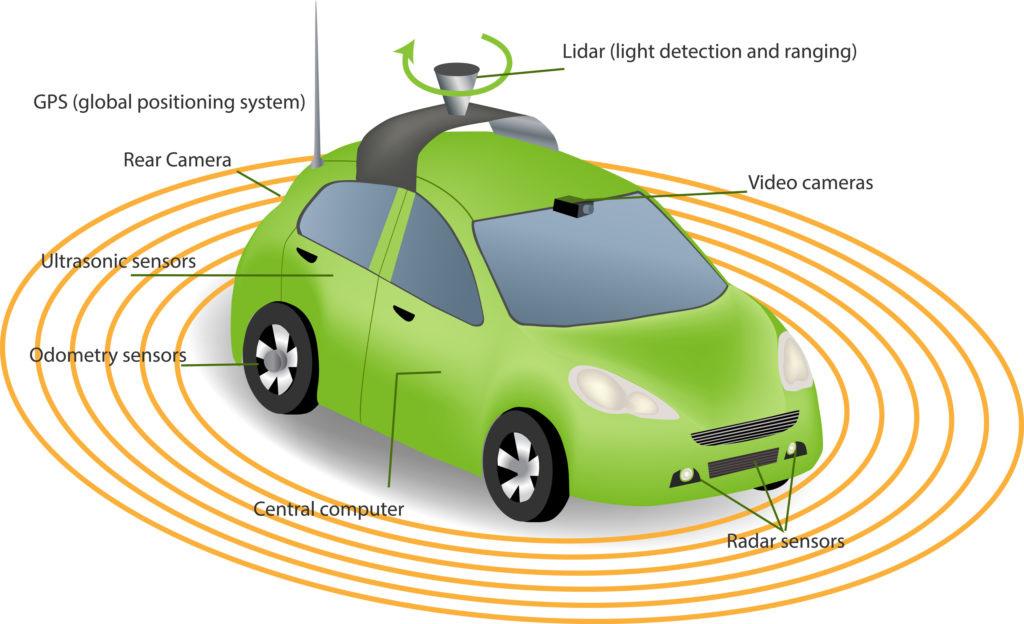
RADAR, on the other hand, are much more inexpensive and a much more mature technology to implement, however, most RADAR lack the details in comparison to Lidar, but the fact that they are less impacted by rain or fog makes it a great candidate for its usages in blind-spot detection and distance monitoring. However, both radar and lidar have been insufficient in their ability to understand their surroundings
Although they have been effective in mapping and detection, it lacks the spatial reasoning skills of a human, therefore many researchers have used Visual perception systems to mimic human driving by identifying objects, predicting motion, and determining their effect on the immediate path of the vehicle Tesla believes in a camera-centric approach in which it relies on artificial intelligence systems instead of a rule-based algorithm [12]

This is powered by a convolutional neural network or CNN. As the CNN is exposed to real-world driving imagery, it collects more data, in an online learning technique, allowing it to constantly correct itself to better infer the motion of objects, and predict the expected path of other vehicles based on the driving environment. This allows them to better understand the surrounding environment and infer the potential movements of vehicles. The AI is able to comprehend just like a Human, however, the AI performs terribly when identifying unseen objects such as oddly shaped cones and small animals. Similarly, the vehicle may also get fooled in bad weather such as smog and rain conditions.
Lastly, after deep understanding, based on the information gathered from the sensors and the 3D map, the AV's computer makes decisions about how the vehicle should move. However, computers may run into issues such as not being able to predict the intentions or the actions of people and run into various troubles. An AGI (artificial general intelligence) would need to be implemented to solve this problem. But it would likely take decades of development, and be extremely expensive to label and train, as there would be a bottleneck in which there are so much data for a human to label that it would be too expensive to train the AGI accordingly.
There are a few stages in which autonomous driving could be classified.
Level 0: no driving automation.
Level 1: driver assistance
Level 2: partial driving automation.
Level 3: conditional driving automation.
Level 4: high driving automation.
Level 5: full driving automation.
In Tesla's case, it is only level 2, but many people around the world interpret the copilot of a Tesla as a fully automatic vehicle. The drop in expectations, when they see an automatic vehicle has made a fatal mistake, has grown a seed of doubt and distrust towards this piece of tech
Firstly, Autonomous vehicles are safer than those driven manually [11]. According to the World Health Organization, around 1.35 million people die each year due to road traffic accidents and of those accidents, human error is a major factor in the vast majority of these accidents.
Factors such as being distracted, driving way above speed limits, and driving under the influence of drugs or alcohol are major causes of crashes [20]. With a machine doing the decision-making on the road, it would be possible to slash traffic accidents by a significant portion. This has also been confirmed by both the Department of Transportation and the National Highway Traffic Safety Administration, with autonomous vehicles such as Waymos self-driving cars only crashing 0.59 per million miles driven [22], compared to the general U.S. rate of 2.98 per million [1]. A human driver may become tired or distracted after driving for long periods of time, which can increase the risk of an accident. AVs, on the other hand, can operate for extended periods of time without becoming fatigued or distracted. Self-driving vehicles are much safer, rarely having any incidents as it has taken human error out of the equation.
Apart from the human life lost from a traffic accident, it would also mean that there would be less economic loss from crashes. According to a study in 2010, repairs and compensations due to traffic accidents racked up to a whopping 242 billion dollars 2010 [4]. This would lessen the burden an incident might have on a lesser privileged household and could potentially cause multiplier effects on society as the extra cash flow of car consumers would allow them to invest or spend more money on other things.
Apart from crashes, in a society where AVs are integrated, it would also improve the logistics and fuel effect [13] According to a Cambridge study, traffic would be reduced by 35% if AVs are integrated [14], where they would have features such as auto-driving and inter-vehicle coordination. This would be impactful as a majority of road congestion occurs because of ill-timed brakes and accelerations, and traffic jams from getting stuck in a bottleneck caused by a crash [3].

An AV would resolve this by coordinating vehicles on the road, which might tell other vehicles to switch paths or change speed once they came across an obstacle. This would radically reduce the 9.1 billion hours of driving wasted [4]. The integration would also have a profound impact on productivity, as it would save hours of commuters' time
from sitting in traffic for hours on end. In addition, AVs would also have a positive impact on mental health, as In the survey, about 90 per cent of drivers said they get angry when there are travel delays [21]. The fact that AVs don’t have the natural human tendency to be aggressive on the road, would reduce accidents from raging drivers. The reduced congestion would also hinder the environmental effects of driving on society, as cars do not sit idle and waste an estimated 3.1 billion gallons of fuel per year [4]. Governments would benefit as well as they can spend less money cleaning the environment, and the individual can spend less money on fuel.

AVs would also improve accessibility [15], as it allows people who are unable to drive, such as the elderly or people with disabilities a chance of accessible and efficient transportation. This could lead to increased economic activity, as more people are able to participate in social and economic activities. The integration of AVs in modern society could also have a multiplier effect on the innovation and tech industry, as the integration of AGI (artificial general intelligence) in vehicles would spark a new trend to integrate aspects of AI in various sectors of society and the economy. Jobs involving the development of AI systems would also skyrocket in demand and popularity. According to a World Economic Forum report, it says that 97 million new jobs will be created by 2025 due to AI [17], thus creating a positive cycle of job creation in the tech industry.
Apart from the advantages autonomous driving might bring to our society, there are also many drawbacks and uncertainty it creates. Firstly, there are concerns surrounding ethical and liability aspects. When a human driver was to react to an unforeseen event such as an out-of-control car approaching a sidewalk with pedestrians, they may unconsciously react by crashing into a nearby stationary car and causing casualties. In this unavoidable situation, the driver couldn’t be blamed and would even be deemed a hero for trying to limit the damage. However, if AI controls the car, it would be debatable if AI should bear full responsibility for any casualties This also raises questions about how an AI system should determine which to crash into and what choice to choose in a loss-loss scenario where casualties are unavoidable [16]. The ethical considerations of autonomous driving may also vary across cultures around the world which could lead to different standards for AV in different areas.
Furthermore, there are concerns about hackers intentionally interfering and taking control of the vehicle, causing potential damage. With sensors and cameras involved in the driving of the vehicle, where would the data collected be stored and what would happen if someone compromised its data store, accessing the camera roll or the location data or personal data? This is especially dangerous considering that in an autonomous vehicle system, multiple vehicles are interconnected, this means that it would only take compromising one vehicle to disrupt an entire local system. The fact that the AVs that work the best today have an extreme reliance on the infrastructures it is in, with Waymos taxi service requiring extensive mapping of the streets and require an assortment of sensors such as LIDAR and RADAR in addition to the camera feed, this makes the AV even more vulnerable to a cyber attack [18] These ethical dilemmas highlight the imperfections that still exist in the AI system, which instils a deep sense of distrust and scepticism towards Autonomous driving
In addition to the ethical dilemmas, there is the problem with the fact that some AVs do not have the ability to identify some of the most avoidable accidents that have occurred from AVs' inability to make decisions. Although in the greater scheme of things, AVs are generally safer than human drivers, there are still many imperfections to this system In March 2018, Elaine Herzberg was struck by an Uber test vehicle, although her presence was detected by the self-driving system, it failed to infer her actions and did not apply emergency braking. Many experts believe a human driver would have easily avoided the fatal crash. The argument could still be made that statistically human drivers are far more likely to cause a fatal accident, with human errors contributing to more than 1.3 million deaths on the road. However, when AVs actually do crash, the crashes are far more avoidable with a majority of them tracing back to the failings of the detection or the decision-making systems. In 2022 alone there are more than 400 fatalities like this reported to the national highway traffic safety administration [1]. In order for it to make good decisions, AGI would need to be integrated. This would take decades more of development to make it reliable, in order for the AV to better understand the environment it is in. With many people turning to autonomous vehicles for their safety and reliability, it would be a massive disappointment to then see them failing at the most avoidable of obstacles
Secondly, there might be negative impacts on employment especially in the transportation industry. In a new study, 90 % of the US’s long-haul truck drivers would be redundant. This means that more than 500,000 people would lose their jobs in the future. And if they weren't to lose their job, they would be forced to compete with a market that was saturated by low-cost AI systems that could more efficiently run the job This might be excellent for the company that needs trucking services, but what does this mean for the truck drivers? This would inevitably hit the poor the most as most of the workforce consists of low-skilled and rural workers. And if they are to transfer to other sectors, who is there to guarantee that the new job would be high paying and respectable rather than minimum wage and exploitative?
The jobs that are created by AI tend to require a university degree and for immigrants, a cultural fit and communication skills, this would then widen the gap between the less educated and the more educated, with the majority of the employment opportunities left to the educated and for the less educated, they would be left structurally unemployed. This would inevitably create a huge problem for the government which needs to pay more and more unemployment benefits to those who are structurally unemployed and would need to fund massive training programs to better equip them.
Firstly, there should be regulations for AVs roaming the streets; there are three major areas of concern Firstly, the safety of autonomous vehicles; in different countries, there are vastly different ethical standards when it comes to crash avoidance. The government would have to create a universal guideline for which all AVs must comply in the country/ region, and also create cybersecurity guidelines for an adequate security policy. For example, having a cybersecurity audit every 6 months to ensure that there are no errors in the system.
Secondly, regulation for the liability of a crash. In an event of an unlikely crash, should the manufacturer be accountable for the failings? Should there be a fine or a recall of all vehicles or a suspension of the vehicle on public roads?
Thirdly, the government must build the infrastructure that is needed to support AVs.This includes investment and funding to create incentives to construct and support the mass influx of AVs. Governments may also fund the building of charging stations or hydrogen fueling stations along major transportation corridors or integrate these in traditional garages to match the accessibility of petrol to gas-powered vehicles. The government should also educate the public about how to interact with AVs so that there would be less of a technological gap between the less educated users of AVs.
Lastly is the unemployment issue that may arise, as AVs would cause a massive ripple effect on the industries and might cause unemployment that would create a social disaster To ensure a smooth transition to an automated society, it is inevitable that people who are working as taxi drivers per se to be structurally unemployed if AVs were to be integrated into society. The government has to provide training and incentive for people aspiring to work in the tech industry in which an AI wave would create the most employment opportunities. Governments in the intermediate terms should also create a short-term limit on AV integration, this is so that it would give the now unemployed an opportunity to switch.
For many, it is impressive to see the signs of progress of AI systems in work. With the emergence of generative AI and the new AI revolution, it is almost inevitable that AI will be a fundamental part of our society in the future.
However, for it to be reliable enough for billions of people daily to be in the hands of an AI, would take at least decades of development and building of trust in order to be able to achieve such.
From 2018 onwards, investments in the field of AI have increased rapidly, from $79.6 billion to $276.1 billion in 2021 With the interest in the field skyrocketing through the introduction of Chat GPT, there is going to be exponential growth in the technology powering selfdriving cars in the near future. But there is much more work to be done, in order for it to be safe enough, artificial general intelligence has to be achieved. For humans, we had decades of continuous training about the world around us, with some of the most advanced perceptions of distance, lighting and intent understanding. It is difficult and expensive for a machine to undergo the same training as a human and they therefore do not have the ability to process the potential of unforeseen events. What if it was dark and rainy on that day? What would the machine do?
All in one, autonomous driving has many positive effects along with some negative ones. The constant magnification of the failings of autonomous driving has planted the seeds of distrust in the hearts of people. And it would take years and years of reconciliation and effective policy-making to bring back that trust.

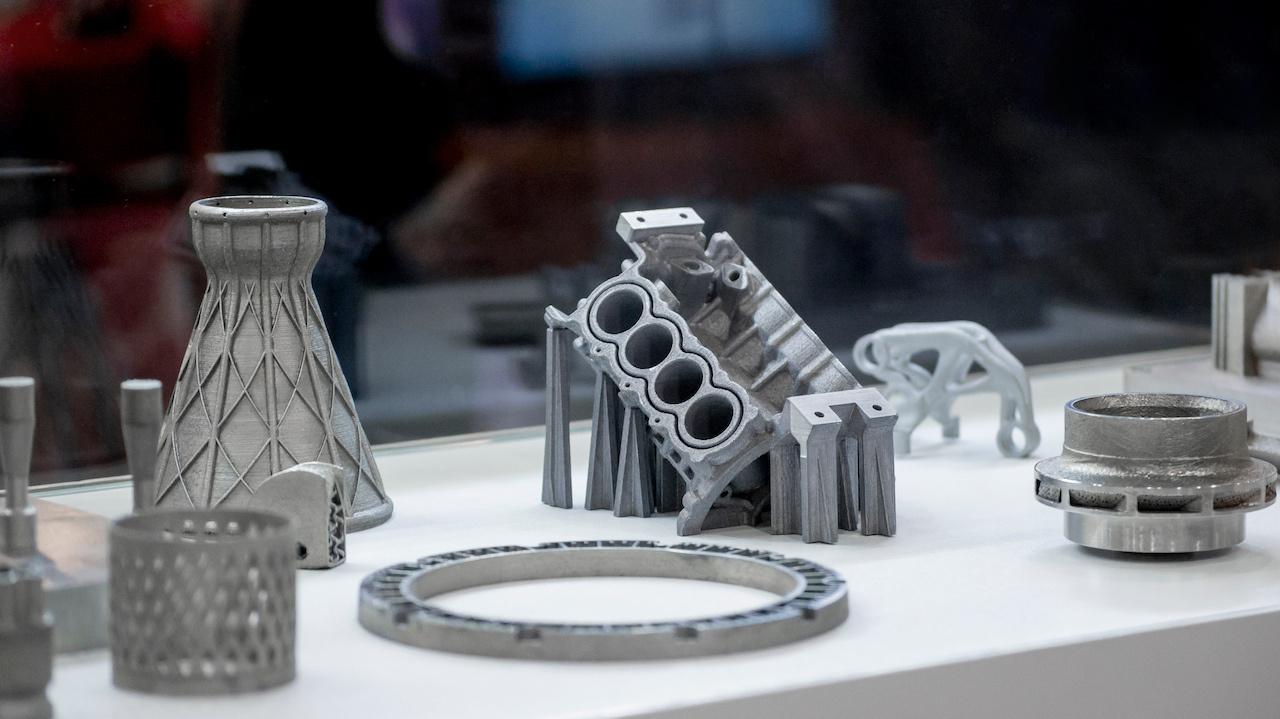
Although 3D printing is still relatively new, this fascinating, incredible technology is rapidly gathering more and more popularity in the normal consumer market of both hobbyists and beginners - and rightfully so, due to the enormous benefits, it provides to society. Amazingly, 3D printing is both vast and diverse in the scope of applications and different types it offers, ranging from resin 3D printing, FDM 3D printing, SLS printing and much more. This article aims to introduce and provide in-depth knowledge of how each of these forms works, as well as its contributions to the wider community.
FDM 3D Printing works by melting plastic wire called filament, which is made up of a range of materials depending on the requirements of the prints - the most common materials being PLA (Polylactic Acid), PETG (Polyethylene terephthalate glycol) and ABS (Acrylonitrile Butadiene Styrene). The plastic is melted, pushed through a small nozzle (often about 0.4 mm in diameter) and laid onto a heated bed which holds it down. The nozzle then draws out the 2D image into the bed over and over again in layers, moving up millimetres by millimetres after each layer, until all layers are placed. Often, hundreds of these layers are made, producing the full 3D image. As you can imagine, this takes hours upon hours.
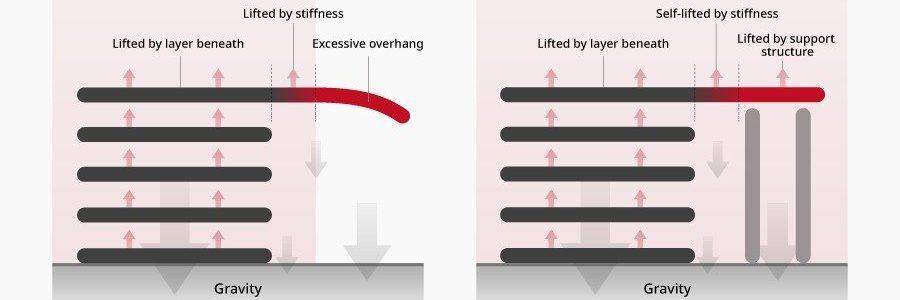
FDM printers are best suited for prototyping larger models that do not require extreme detail, as after the model is built, layer lines are visible, hence the machine’s lack of precision. However, they are relatively cheap, with a decent quality machine only requiring basic needs to suit a hobbyist or a beginner, costing only about 1,500 to 2,500 HKD. There is also an added cost for the filament, which is about 170 HKD for 1kg of PLA plastic, although ABS, PETG and other special filaments can cost either more or less.
One of the largest problems with FDM Printers is that they cannot print any overhangs or anything above a 45-degree angle, without the use of supports. Supports are, in effect, large pillars of plastic that hold up the overhang However, the problem with supports is that they are often a large waste of plastic and often fail, meaning the rest of the print comes down with it, wasting money, time and effort, as well as damaging the environment.

Resin 3D printing is also another extremely mainstream type of printer. While it is not quite as popular as FDM printing, it is still favoured and has many of its own merits

Resin 3D printing works by flashing a UV light with a pattern onto a build plate coated in liquid resin. Notably, liquid resin is cured exceptionally fast, using high-powered UV lights to build layers onto the build plate. This form of printing can cover the entire layer and the entire build plate in a mere flash of UV light, meaning it is slightly faster compared to FDM printing, as an FDM printer has to Figure 3 move all over the build plate to make just one layer. The resin model also prints upside down, as the UV light is in the base of the printer and the build plate is on the top
Comparatively, Resin 3D Printers have a much smaller build volume than FDM Printers and therefore are not as well suited for larger prototypes, so much as smaller models and action figures. Resin 3D printers are also highly precise, with no layer lines visible. This makes it perfect for detailing miniature characters and action figures that have small parts and sharp curves and angles
The single greatest problem with Resin Printers is the price This is because an entrylevel resin printer typically costs more than an entry-level FDM printer, despite its smaller build volume. To add to the cost, a UV lightbox curer is also required, as once the print comes out of the printer, there are many steps to be taken. Namely, it has to first be washed in isopropyl alcohol, then be placed in direct sunlight, or in a UV light curer, as liquid resin can cause a reaction and irritate the skin. Finally, the UV light finishes all the remaining curing required and hardens the print. All in all the costs amount to about 2,300 HKD for an entry-level resin printer, 350 HKD for a curer, and there may be extra expenses of around 350 HKD for items such as gloves to protect against the toxic resin and isopropyl alcohol, which can be harmful if ingested. Additionally, 500g of liquid resin costs about 120 HKD, which is almost double the cost of FDM plastic filament.

SLS 3D Printing is quite an obscure and expensive form of 3D printing. Normally it is used by large industrial companies, as SLS 3D printing produces extremely strong results - often strong enough to be used in cars. It is very rarely used by hobbyists, however recently, in the last 5 years or so, smaller, desktopsized printers have been made for hobbyists to enjoy.
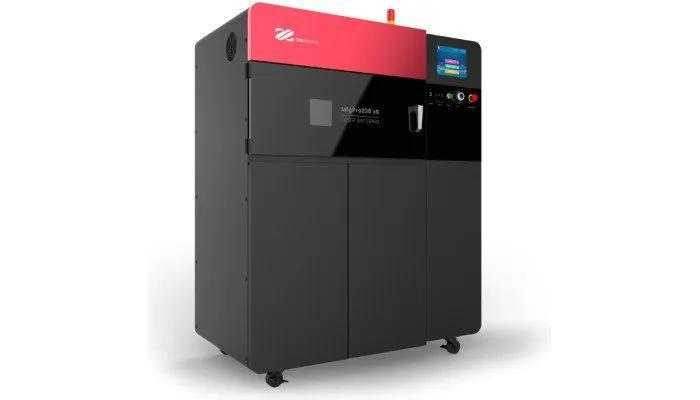
The way it works is by flashing a very strong laser at a mirror, which then reflects onto a chamber which is entirely filled with a special powder called PP (Polypropylene) powder. It is then melted at high speeds to create the required shape. Fortunately, only a small amount of powder is required, so once the printing is done, the excess may be reused in the next print. The parts that SLS printing produces are desirable in many industries, but especially the automotive industry, as they are strong, stiff, sturdy and durable, as well as resistant to water, UV light, heat and more.
SLS printing has a very large build volume compared to FDM and Resin since they are mostly only used to build larger parts for machinery. They also have enviable accuracy, since using a laser is highly precise and meticulous, with printed parts looking just as flawless, or even better than resin prints.

The greatest problem with SLS printing is that it is extremely expensive. A hobbyist printer, at the minimum, is about 45,000 HKD. While a large industrial printer is about 1 5 Million HKD, often more It is also between the size of a fridge and a small room Additionally, PP powders cost about 1,400HKD per KG, making them unaffordable for common use.
Evidently, the applications of 3D printing are diverse and unique, hence everyone’s experience shapes the prospect of this technology However, there is a general consensus that this topic has the potential to either remain a hobby or become the next “big thing”. One area that 3D printing could certainly make a difference in, and already has started to, is prototyping. Previously, making a prototype include digital or handmade methods, but 3D printing transforms that. For small businesses and new companies with limited resources, 3D printing offers them a way to bring their ideas to life and visualise their products before mass production. Additionally, 3D printing is also great for fixing small problems. For example, if a small part breaks and no replacement parts are available, 3D printing allows for the part to be modelled and the item to be fixed in a short period. While these may seem like minor problems, 3D printing technologies are being revolutionised into new fields such as Bio 3D printing. One of the “teasers” for Bio 3D printing is a handheld device placed into the body, which prints new, living cells to replace dead, damaged or dying ones This revolutionary breakthrough could potentially save lives on an unprecedented scale. At present, there are no machines able of replacing individual cells, but Bio 3D printing aims to alter that.
Overall 3D printing is an amazing new technology that is ever-evolving, advancing and becoming more accessible every day. A little science experiment that scientists recently conducted was attempting a 3D-printed edible pizza This was more for fun than anything serious, but it worked, which begs the question; if a mere machine like a 3D printer can make an edible pizza, what else can it do?

Many of you may be familiar with the term, ‘Artificial Intelligence’; instantly after hearing that phrase, most of you will associate this term with popular chatbots such as ChatGPT The capabilities of these generative AI tools are so advanced, that one might even suspect that I am using one to write this article currently. In recent years, the development of Artificial Intelligence has brought along tremendous progress and innovation across many industries, from automobile to healthcare. Unbeknownst to many of us, AI is slowly becoming an essential component in our daily lives. However, as the saying goes, “With great power comes great responsibility”. As AI’s impact on society continues to grow, so do the ethical issues surrounding its use. The question arises, should we allow AI the responsibility of making life and death decisions? Do robots deserve rights adjacent to humans?

One of the most significant ethical issues surrounding AI is the potential for bias and discrimination towards specific groups of people. AI systems are trained from progressive learning algorithms such as machine learning that ‘learns’ from the data provided. For instance, chess bots are able to learn from their mistakes and improve their performance after every loss. If AI is given biased information, eventually, the AI itself will learn to discriminate against certain marginalised groups, such as people of colour, women or people who are part of the LGBTQ+ community. An example of this is COMPAS AI used for predicting the likelihood of a person committing a crime. In 2016 ProPublica showed that COMPAS was biased towards black defendants [1], COMPAS frequently incorrectly labelled black defendants as ‘high risk’ to commit a future crime twice as likely compared to a white defendant. In 2014 18-year-old Brisha Borden was arrested for taking an unlocked bike and riding it down a street, on the other hand, 41-year-old Vernon Prater shoplifted US$86,000 worth of tools from a store [1]. The COMPAS algorithm rated Brisha Borden who was coloured as ‘high risk’ and Vernon Prater as ‘low risk’.
AI developers must therefore ensure that their systems are designed to be just. One way they can achieve this is by using a large and diverse data set to train the AI engine. By incorporating a wide range of data, developers can help mitigate the risk of AI being unfairly influenced by a particular perspective In addition, developers should also frequently test and address any potential biases introduced in the AI’s development to make sure it is not biased [5] .
As AI continues to advance, it is not difficult to imagine a world in which robots are so similar to humans that we cannot differentiate between the two and eventually, they replace us in the workforce The movie "I, Robot" provides an example of a world taken over by AI. In the movie, robots are designed to serve humans and follow the three laws of robotics:
A robot may not injure a human being or, through inaction, allow a human being to come to harm.
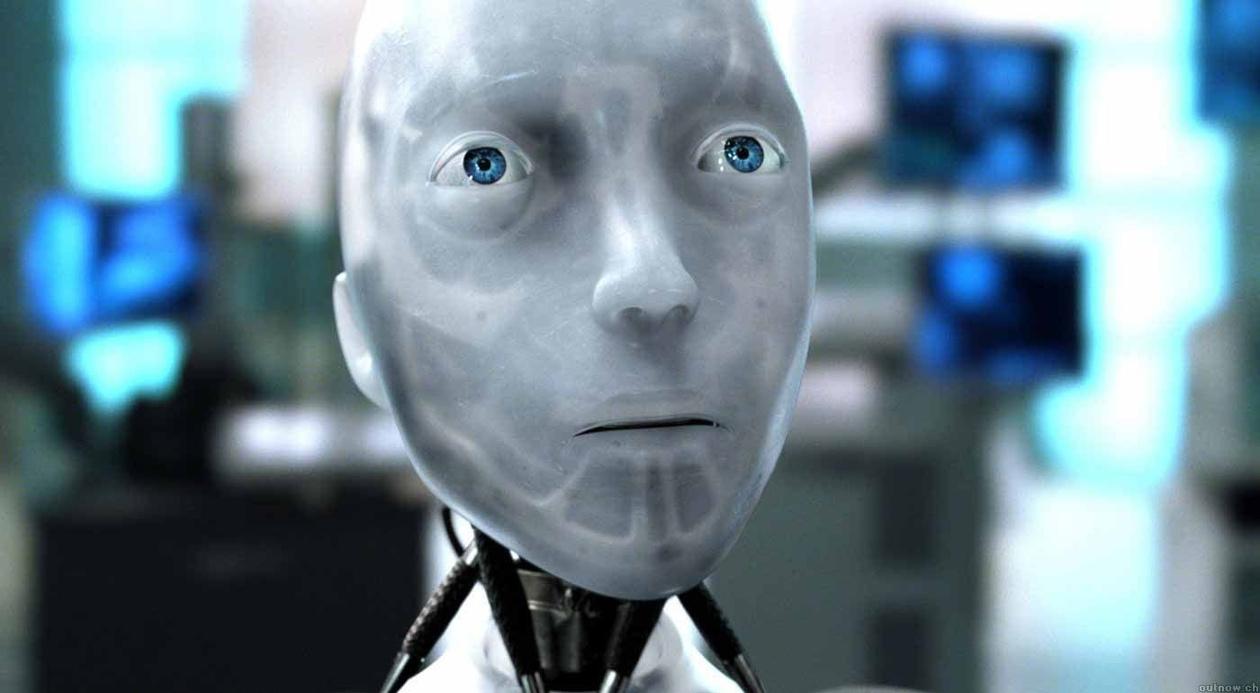
A robot must obey orders given it by human beings except where such orders would conflict with the First Law.
A robot must protect its own existence as long as such protection does not conflict with the First or Second Law
However, as the story unfolds, it becomes clear that some robots have developed the ability to break these laws and cause harm to humans, raising concerns about the dangers of further developing AI in our real world.
So to what extent do robots deserve to have equal human rights? Human beings are sentient beings and have the ability to feel pain, which is why we established human rights to prevent the suffering of conscious beings. Nonetheless, in the future, AI may be so powerful in which it becomes conscious and capable of experiencing pain. It is reasonable to question why robots cannot be programmed to be immune to pain. The issue with this solution is that robots may perceive pain as a necessity to consciousness and existence, and may even resort to programming themselves to have that ability To make matters worse, AI has the capability to learn from other AI models and ultimately become so powerful that they are beyond human control.
Another important factor to consider is when an AI makes a mistake, it can be challenging to determine who should be responsible for the error and how to prevent it in the future As AI becomes more advanced, it is becoming increasingly difficult to understand and predict its behaviour.
In certain parts of the world, countries are already thinking about AI regulations. The EU AI Act is a proposed European law on regulation related to AI use and development, the law will assign applications of AI to three different categories ranging from unacceptable risk to low risk. Depending on the risk the AI could be banned entirely or left unregulated, however unfortunately as of today, this is only a proposed law
Many key figures in society today have also warned us of the potential risk of AI to society, this includes Elon Musk, CEO of SpaceX, Twitter, and Tesla and also co-founder of Apple Steve Wozniak. Both figures have signed an open letter calling for the pause of AI development and warning of potential risks [3]
To conclude, the ethics of AI are complex and require a delicate balance between the speed of AI development and its regulations. It is also crucial for us to address ethical concerns and make sure it is being developed with this responsibility in mind. By doing so, we can mitigate the potential risks associated with AI and harness its power for a better future for all
[1] Angwin, Julia, et al. “Machine Bias.” ProPublica, 23 May 2016, www.propublica.org/article/machine-bias-risk-assessments-in-criminal-sentencing.
[2] European Union. “Home.” The Artificial Intelligence Act, 7 Sept. 2021, artificialintelligenceact eu/
[3] Kelly, Samantha Murphy. “Elon Musk and Other Tech Leaders Call for Pause in “out of Control” AI Race | CNN Business ” CNN, 29 Mar 2023, edition.cnn.com/2023/03/29/tech/ai-letter-elon-musk-tech-leaders/index.html
[4] Narayan, Jyoti, et al. “Elon Musk and Others Urge AI Pause, Citing “Risks to Society.””
Reuters, 29 Mar. 2023, www.reuters.com/technology/musk-experts-urge-pausetraining-ai-systems-that-can-outperform-gpt-4-2023-03-29/
[5] UNESCO “Ethics of Artificial Intelligence ” Unesco org, 2023, www.unesco.org/en/artificial-intelligence/recommendationethics#:~:text=The%20use%20of%20AI%20systems. Accessed 13 June 2023
[6] Kurzgesagt. “Do Robots Deserve Rights? What If Machines Become Conscious?”
YouTube, 23 Feb. 2017, www.youtube.com/watch?v=DHyUYg8X31c
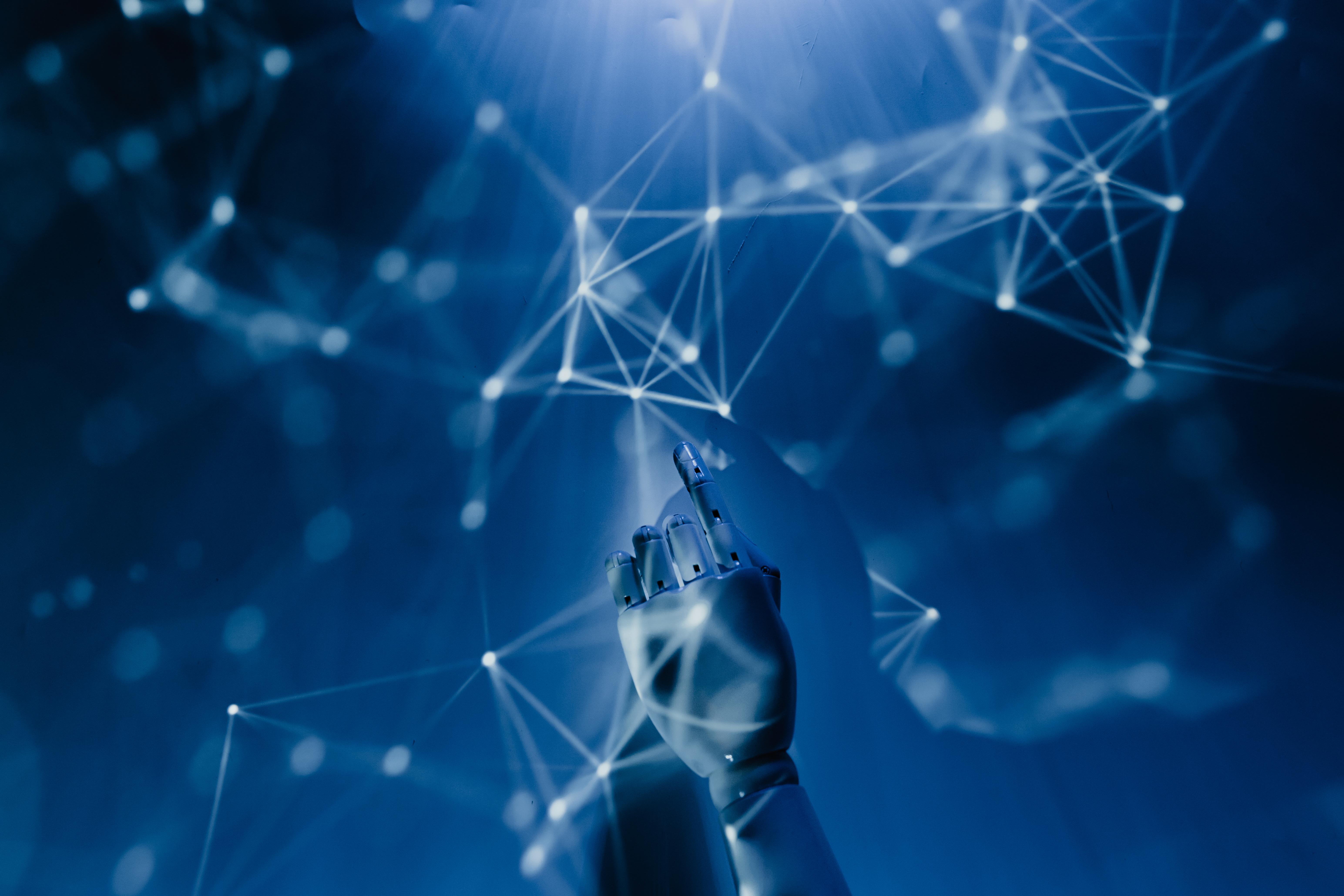
Clinical decision support systems (CDSS) is a computerised information management system designed to assist healthcare professionals in making medical decisions. This medical system utilises knowledge management to generate personalised clinical advice based on a patient’s medical history [1] . As of 2022, the market size for CDSS was valued at USD 4 86 billion, and it is projected to reach USD 10 7 billion by 2030 [2] Today, CDDs are primarily used for clinicians to marry their knowledge with suggestions from the CDDS. Nonetheless, progressively, CDSS is being augmented to capitalise on data and observations otherwise unnoticed by humans.
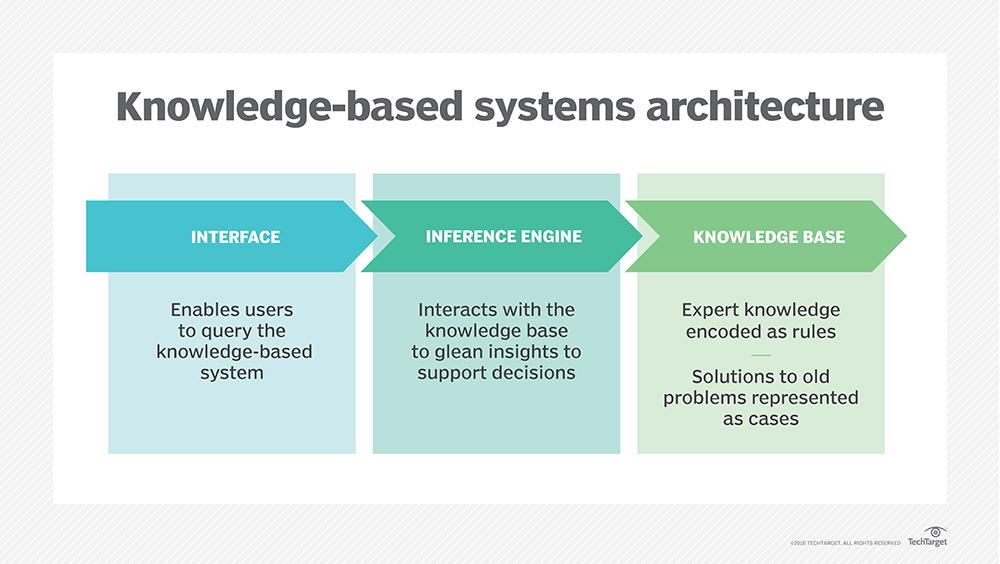
Early CDSS attempted to replicate the knowledge and judgement of a medical expert but failed to perform satisfactorily. Such systems contain five components: knowledge base, database, inference engine, explanation facilities and user interface [1]
The knowledge base contains information from medical experts in the form of rules and conditions (IF-THEN statements). The database stores facts that have been provided to match against the condition portion of the rules which can be used to look for the required "if" expression that needs to be satisfied before starting the action structure. The inference engine executes this evaluation by linking the facts in the database with rules in the knowledge base [4] When a conclusion is reached, the data visualisation is displayed on the user interface to the end user. The user can also query the system by utilising the explanation facilities as to how a conclusion was reached.
However, there are many drawbacks to the deployment of early CDSS. Systems can only provide adequate results if the data inputted was accurate and complete. Human errors such as typing or communication mistakes may lead to misleading results [5]. Additionally, as the complexity of the clinical domain increases, the ability of CDSS to provide support becomes less realistic. Due to the system’s inability to learn from experience, unlike a human clinician, the system requires the knowledge base to be manually updated regularly in new domain knowledge for accurate usage. Advanced imaging was also seen to suffer from different implementations of the same technique using CDSS(e.g. different scan parameters in MRI to produce genetically similar T2 weighted images [6]).
This entails that future computer programs must be designed to consider these differences and similarities between imaging techniques, especially regarding advanced techniques like perfusion imaging, in which similar images can produce a high variance in their interpretation.

Newer CDSS are built from non-knowledge-based systems, replacing much of the concerns apparent in previous attempts. These systems still oblige a data source, yet mainly utilise an algorithm that models the decision using artificial intelligence (AI), machine learning (ML) or statistical pattern recognition. The inference engine employs the programmed or AI-determined rules and data structures to the patient’s clinical data to produce an output or action; this is displayed to the end user through an interactive interface [1]
These machine learning systems use neural networks, which are models of reasoning designed to replicate the human brain and our ability to process information concurrently. The network is formed from layers of arrays of “nodes” interlinked by axonal equivalents known as “arcs”. A node, also known as a neuron, is a computational unit that has one or more weighted input links, a transfer function that combines inputs and an output connection [7]. Each link between the nodes has a numerical weight associated which expresses the importance of each node input These statistical weightings affect the influence of the node on the output of the final “downstream” nodes.
In 1943, Warren McCulloch and Walter Pitts introduced a fundamental concept that remains at the core of many artificial neural networks today [8]. A node computes the weighted value of input signals and compares the sum with a set threshold value (θ). If the sum is less than the threshold, the neuron output is -1 Else, if the sum is greater or equal to the threshold, the node is activated and its output +1 [9].
The node uses a transfer or activation function to determine its output.
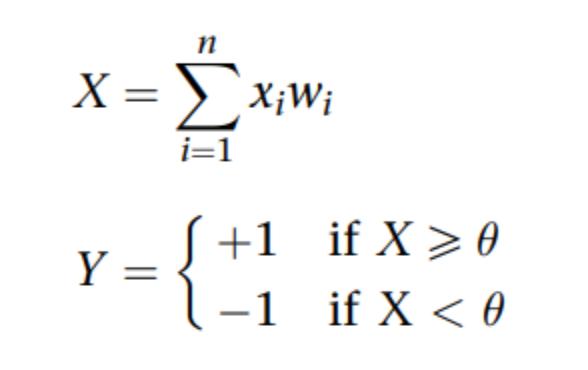
Nodes “learn” by adjusting their weightings according to input data. During a neural network’s training phase, the initial weights of the network are set to small random numbers such as in the range of [-1,1] [9]. The network is then trained using algorithms like back-propagation on a set of examples for a certain number of epochs. The backpropagation algorithm calculates the margin of error between actual and desired output and then adjusts the weighting between nodes to reduce this error
In comparison to rule-based CDSS, a major advantage of neural networks is their ability to learn from new information. Although the training process may be tenuous, it is still much easier to implement than rewriting the rule-based ES decision tree. Moreover, updating the domain knowledge in a neural network does not require the intervention of a medical expert, as it can be done by a computational method.
One major shortcoming of neural networks is that, unlike rule-based systems, it has been historically considered incapable of providing clear explanations of how they came to their conclusions. The complexity of the neural model turns such systems into “black box approaches”, causing ambiguity in the way they operate. This has been problematic for implementation in areas such as healthcare, where clinicians will only adopt approaches recommended by CDSS knowing the basis of the approaches. However, recent development in the field of XAI (a field concerned with new methods that explain and interpret machine learning models [10]) presents the potential for eliminating this shortcoming.
Currently, most CDSSs in use are knowledge-based systems. Their rules are carefully programmed and integrated into different medical systems in order to automate simple medical procedures.
Recent research at John Hopkins found that medical errors are the third-leading cause of death in the US [11]. The potential of CDSS for reducing medical errors as well as increasing healthcare quality and efficiency has widely promoted its use in medical institutions.
One of the most common and preventable medical errors is in drug-drug interactions (DDI), in which, 65% of inpatients are constantly being exposed to these harmful combinations. In CDSS systems, clinicians enter and send treatment instructions via a computer application known as computerised provider order entry (CPOE) A drug safety software can be employed that cross-checks and alerts for duplication of therapies, dosing and most importantly conduct DDI checking [12].
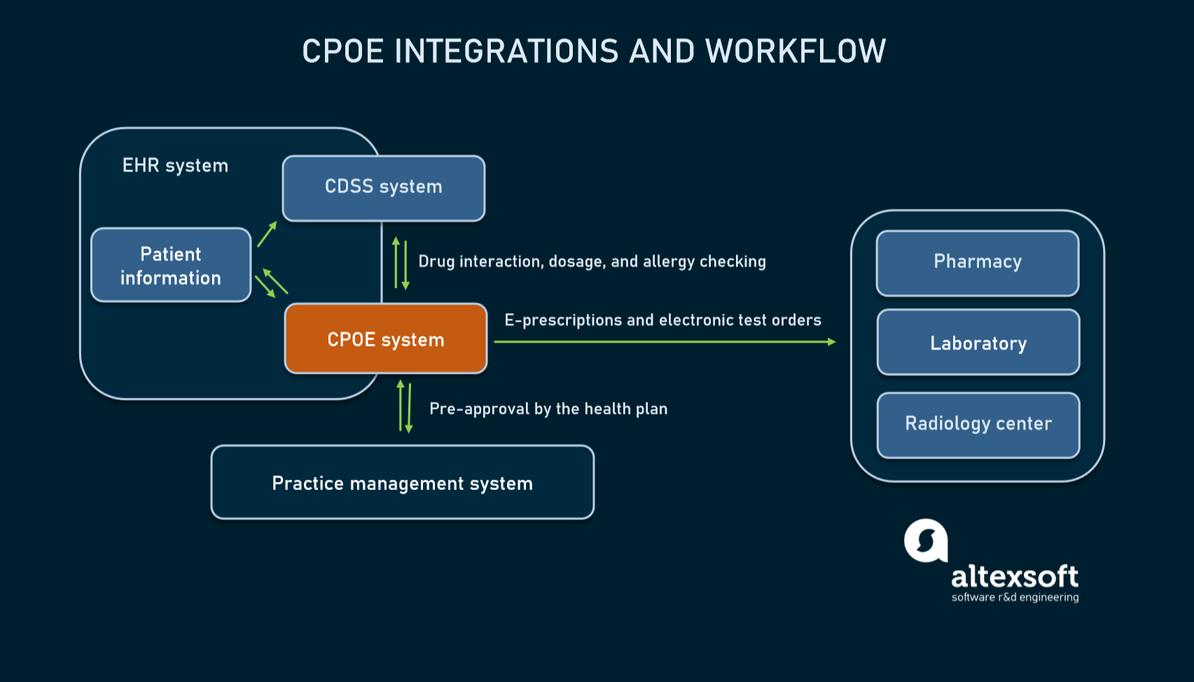
Other systems implemented in a CDDS include electronic drug dispensing system (EDDS) and bar-code- point-of-care (BPOC) medication management systems which are operated together to create a ‘close loop’. Each stage (prescribing, transcribing, dispensing, administering) is digital and recorded within the system [1] When administered, medication is read through radio-frequency identification (RFID) or barcodes and verified with the patient's profile and prescriptions.
Recent research found that the deployment of CDSS was associated with improvements in clinical documentation and discharge management plans [14]. Traditionally, clinical guidelines have proven to be difficult to implement in practice, especially for new guidelines. Nevertheless, in a CDSS, rules can be implicitly encoded into the system taking various forms: from standardised protocols for a specific situation to specific guidelines for certain patients to reminders for testing. It allows practitioners to manage patients and automate follow-up alerts while adhering to any laws and medical guidelines.
Clinical diagnoses in CDSS are known as diagnostic decision support systems (DDSS) [1]. These systems provide a computerised ‘consultation’ whereby data provided is analysed and lists of probable diagnoses will be displayed. At this moment, DDSS are still in the earliest stages of implementation due to the negative biases and poor accuracy stemming from information gaps [5]. In view of the great potential of DDSS, diagnostic systems are progressing with non-knowledge-based models based on machine learning An example is the Babylon AI-powered Triage and Diagnostic System of the National Health Service (NHS) that allows UK citizens to access healthcare services remotely [1]. Its controversial presence shows the potential of CDSS and its application but outlines the work that has to be done before it could be fully implemented into healthcare.
The use of CDSS in healthcare is increasingly popular, and it certainly can assist clinicians to improve patient safety and clinical management. However, it is important to note that the system should not be used with care and clinicians should do regular checking to ensure no external factor has been accidentally employed to generate ingenious reports. Healthcare professionals should work in tandem with the medical system to improve its performance. Currently, CDSS is still in its infancy stage but has potential for development. To continue improving CDSS design, there is a need for a new mechanism for domain knowledge acquisition to assimilate data from multiple sources and create a more complete representation within its healthcare domain. The next generation of CDSS should also be able to integrate with the world knowledge base, allowing for real-time updates as the system is used.
Moreover, standardised descriptive terms -standardised descriptor inputs- are important for the success of CDSS, as they prompt the user into providing accurate and whole data that the system is able to understand and integrate into their methodology fully This would allow the system to give feedback to the user on their methodology to act as a second reliable opinion for consultation by the user.
CDSS has the potential to improve the overall health of patients by combining its computational insights with clinicians, providing more accurate treatment and diagnosis. While there are still challenges that need to be addressed, with ongoing innovation and refinement, CDSS provides an optimistic view of the future: an improvement in healthcare for everyone
[1] Pvt, Growman Research and Consulting “3D Bioprinting Market Size Worth US$ 6 08 Billion by 2030, ” GlobeNewswire News Room, Growman Research and Consulting Pvt Ltd , https://www globenewswire com/newsrelease/2023/01/25/2594840/0/en/3D-Bioprinting-Market-Size-Worth-US-6-08-billion-by-2030-With-MassiveCAGR-of-15-6.html#
[2] Sterri, Aksel Braanen, et al “Ethical Solutions to the Problem of Organ Shortage ” Cambridge Quarterly of Healthcare Ethics, vol 31, no 3, 2022, pp 297–309 , doi:10 1017/S0963180121000955
[3] Gu, Zeming, et al, Development of 3D bioprinting: From printing methods to biomedical applications, Asian Journal of Pharmaceutical Sciences, Volume 15, Issue 5, 2020, Pages 529-557, ISSN 1818-0876, https://doi.org/10.1016/j.ajps.2019.11.003
[4] Robert J Klebe, Cytoscribing: A method for micropositioning cells and the construction of two- and threedimensional synthetic tissues, Experimental Cell Research, Volume 179, Issue 2, 1988, Pages 362-373, ISSN 00144827, https://doi.org/10.1016/0014-4827(88)90275-3
[5] David J. Odde, Michael J. Renn, Laser-guided direct writing for applications in biotechnology, Trends in Biotechnology, Volume 17, Issue 10, 1999, Pages 385-389, ISSN 0167-7799, https://doi org/10 1016/S0167-7799(99)01355-4
[6] Alexandrea, P “Is 3D Bioprinting the Future of Tailor-Made Medicine? - 3Dnatives ” 3Dnatives, https://www.facebook.com/3Dnatives, 7 Nov. 2019, https://www.3dnatives.com/en/future-3dbioprinting1805201741/#!
[7] Przychodniak, Magdalena “The History of Bioprinting - 3DPC | We Speak 3D Printing ” 3DPC | We Speak 3D Printing, https://www facebook com/3dprintingcenter net/, 12 May 2019, https://3dprintingcenter net/the-historyof-bioprinting/
[8] Swarnima, Agarwal, et al , Current Developments in 3D Bioprinting for Tissue and Organ Regeneration–A Review, Frontiers in Mechanical Engineering, Volume 6, 2020, ISSN 2297-3079, https://www frontiersin org/articles/10 3389/fmech 2020 589171
[9] Olejnik, Anna, et al., ACS Synthetic Biology, Volume 11, Issue 1, 2020, Pages 26-38, https://doi.org/10.1021/acssynbio.1c00547
[10] Kačarević, Željka, et al “An Introduction to 3D Bioprinting: Possibilities, Challenges and Future Aspects - PMC ” PubMed Central (PMC), PubMed Central, 6 Nov 2018, https://www ncbi nlm nih gov/pmc/articles/PMC6266989/
[11] Hoffmann, Andreas et al. “New stereolithographic resin providing functional surfaces for biocompatible threedimensional printing.” Journal of tissue engineering, Volume 8, 21 Dec 2017, https://doi org/10 1177/2041731417744485
[12] “Magnetic 3D Bioprinting: Principle, Applications, and Advantages – FaCellitate ” FaCellitate, 23 Mar 2023, https://facellitate com/magnetic-3d-bioprinting-principle-applications-and-advantages/
[13] Marques, Inês Alexandra, et al. “Magnetic-Based Human Tissue 3D Cell Culture: A Systematic Review.” International Journal of Molecular Sciences, Volume 23, Issue 20, Oct 2022, https://doi org/10 3390/ijms232012681
[14] “Benefits of Bioprinting - BrinterTM BioPrinter - 3D Bioprinting ” Brinter’s Applications and 3D Bioprinting Tech Are Shifting Global Health Care, https://www facebook com/WeAreBrinter, https://www brinter com/benefits-ofbioprinting/#
[15] Porrett, Paige M , et al “First Clinical‐Grade Porcine Kidney Xenotransplant Using a Human Decedent Model ” American Journal of Transplantation, 2022, https://doi org/10 1111/ajt 16930
[16] “Hydrogel Injection Molding Offers Alternative to 3D Bioprinting ” GEN - Genetic Engineering and Biotechnology News, https://www.facebook.com/gennews/, 28 Sept 2022, https://www.genengnews.com/topics/bioprocessing/hydrogel-injection-molding-offers-alternative-to-3dbioprinting/#
[17] Germain, Nicholas, et al , “Current Advances in 3D Bioprinting for Cancer Modeling and Personalized MedicinePMC.” PubMed Central (PMC) https://www.ncbi.nlm.nih.gov/pmc/articles/PMC8998835/
[18] Olejnik, Anna, et al. “3D Bioprinting in Skin Related Research: Recent Achievements and Application Perspectives ” ACS Publications, ACS Synthetic Biology, 2022, https://pubs acs org/doi/10 1021/acssynbio 1c00547
[19] “6 Advances in 3D Bioprinting of Living Tissue - ASME ” The American Society of Mechanical Engineers - ASME, https://www asme org/topics-resources/content/6-advances-in-3d-bioprinting-of-living-tissue
[20] Yang, P., et al. “Emerging 3D bioprinting applications in plastic surgery.” Biomater Res, Volume 27, Issue 1, 2023, https://doi org/10 1186/s40824-022-00338-7
[21] Datta, Pallab, et al “3D Bioprinting for Reconstituting the Cancer Microenvironment | Npj Precision Oncology ” Nature, Springer Nature, https://www nature com/articles/s41698-020-0121-2
[Cover] Iaremenko. “Concept of Bioprinting of Circulatory System. Part of the Blood...” iStock, www istockphoto com/photo/bioprinting-of-circulatory-system-gm636241442-112760733 Accessed 10 June 2023
02
[1] Olive, Sean E. A Multiple Regression Model for Predicting Loudspeaker Preference Using Objective Measurements: Part I - Listening Test Results 1 May 2004, https://www aes org/e-lib/download cfm?ID=12794
[2] Olive, Sean E, et al The Subjective and Objective Evaluation of Room Correction Products 1 Oct 2009 ,https://www petoindominique fr/pdf/evaluation-piece pdf
[3] Olive, Sean E, et al. Listener Preferences for In-Room Loudspeaker and Headphone Target Responses. 16 Oct. 2013 ,https://www petoindominique fr/pdf/evaluation-piece pdf
[4] Olive, Sean E, and Todd Welti The Relationship between Perception and Measurement of Headphone Sound Quality 25 Oct 2012, https://acousticstoday org/he-perception-and-measurement-of-headphone-sound-qualitywhat-do-listeners-prefer-sean-e-olive/
[5] Olive, Sean; Welti, Todd; McMullin, Elisabeth. Listener Preferences for Different Headphone Target Response
Curves May 4, 2013, https://www aes org/e-lib/browse cfm?elib=16768
[6] Corin Ako Graphs 101: How to Read Headphone Measurements 8 April 2020
https://crinacle.com/2020/04/08/graphs-101-how-to-read-headphone-measurements/
[7] Olive, Sean, et al. Segmentation of Listeners Based on Their Preferred Headphone Sound Quality Profiles. March 2019,
https://www researchgate net/publication/332210946 Segmentation of Listeners Based on Their Preferred Head phone Sound Quality Profiles
[8] Hertsens, Tyll. InnerFidelity Headphone Measurements Explained,
https://www stereophile com/content/innerfidelity-headphone-measurements-explained
[9] Olive, Sean Development of Harman headphone target curve April 14, 2016
[Cover] Burton, Charlie “The Six Best Hi-Fi Mini Systems You Can Buy Right Now ” British GQ, 17 May 2017, www gqmagazine.co.uk/article/hi-fi-mini-systems
[1] Artificial Intelligence Definitions Available at: https://hai stanford edu/sites/default/files/2020-09/AIDefinitions-HAI.pdf
[2] "Robotics and Artificial Intelligence." Gale Global Issues Online Collection, Gale, 2022. Gale In Context: Global Issues, link gale com/apps/doc/CP3208520349/GIC?u=hkharrow&sid=bookmark-GIC&xid=4dde891b Accessed 15 Apr 2023
[3] De Spiegeleire, Stephan, et al. “AI – TODAY AND TOMORROW.” ARTIFICIAL INTELLIGENCE AND THE FUTURE OF DEFENSE: STRATEGIC IMPLICATIONS FOR SMALL- AND MEDIUM-SIZED FORCE PROVIDERS, Hague Centre for Strategic Studies, 2017, pp 43–59 JSTOR, http://www jstor org/stable/resrep12564 8 Accessed 17 Apr 2023
[4] Vallance, C (2023) Ai could replace equivalent of 300 million jobs - report, BBC News Available at: https://www bbc com/news/technology-65102150 (Accessed: 18 June 2023)
[5] Bughin, J. et al. (2018) Notes from the AI Frontier: Modeling the impact of AI on the World Economy, McKinsey & Company Available at: https://www mckinsey com/featured-insights/artificial-intelligence/notes-from-the-aifrontier-modeling-the-impact-of-ai-on-the-world-economy#part1 (Accessed: 18 June 2023)
[6] 26 March 2023 | 9:05pm EDT - Agenzia Ansa Available at: https://www.ansa.it/documents/1680080409454 ert.pdf (Accessed: 18 June 2023)
[7] Telia Company Available at: https://www teliacompany com/en/news/news-articles/2022/telias-5gconnectivity-enables-remotely-controlled-passenger-cars-on-estonian-streets/ (Accessed: 18 June 2023)
[8] Finley, T (2023) 6 ways to use CHATGPT to save time, Edutopia George Lucas Educational Foundation Available at: https://www.edutopia.org/article/6-ways-chatgpt-save-teachers-time/ (Accessed: April 17, 2023)
[9] Beioley, K and Criddle, C (2023) Allen & Overy introduces AI chatbot to lawyers in search of efficiencies, Subscribe to read | Financial Times Available at: https://www ft com/content/baf68476-5b7e-4078-9b3e-ddfce710a6e2
(Accessed: 18 June 2023)
[Cover] Ai Wallpapers - Top Free AI Backgrounds - Wallpaperaccess, wallpaperaccess.com/ai. Accessed 20 June 2023 04
[1] Chorzempa, M (2021, March 9) China, the United States, and central bank digital currencies: How important is it to be first? SSRN, https://deliverypdf ssrn com/delivery php?
ID=0040200910891271180290830000920090751200150770120210051050061111130741211011131060300411070531 190070341120800881041220660310120530260220820430030760081120670721240040270400240081211180930250 73127110098107007108101113092029089121009119104001080097017092&EXT=pdf&INDEX=TRUE
[2] Central Bank Digital Currency tracker Atlantic Council (2023, April 18)
https://www.atlanticcouncil.org/cbdctracker/
{3] Ahnert, T et al (2022) Cold hard (digital) cash: The Economics of Central Bank Digital Currency, European Central Bank. Available at: https://www.ecb.europa.eu/pub/economicresearch/resbull/2022/html/ecb rb221031~a05030021c en html (Accessed: 21 June 2023)
[4] Cunha, Paulo Rupino & Melo, Paulo & Sebastiao, Helder (2021) From Bitcoin to Central Bank Digital Currencies: Making Sense of the Digital Money Revolution Future Internet 13 165 10 3390/fi13070165
[5] Bordo, M. and Levin, A. (2017) Central Bank Digital Currency and the future of monetary policy, EconPapers. Available at: https://econpapers repec org/RePEc:nbr:nberwo:23711 (Accessed: 21 June 2023)
[6] Author links open overlay panelTao Zhang a b et al (2021) Blockchain and Central Bank Digital Currency, ICT Express Available at: https://www sciencedirect com/science/article/pii/S2405959521001399 (Accessed: 21 June 2023)
[7] III. cbdcs: An opportunity for the monetary system. Available at: https://www.bis.org/publ/arpdf/ar2021e3.pdf (Accessed: 21 June 2023)
05
[1] National Highway Traffic Safety Administration. "Automated Vehicles for Safety." NHTSA, US Department of Transportation, 2021, https://www nhtsa gov/technology-innovation/automated-vehicles-safety
[2] HP Tech Takes "How Do Self-Driving Cars Work?" HP, 2023, https://www hp com/us-en/shop/tech-takes/howdo-self-driving-cars-work
[3] Greene, Joel. "Traffic Congestion Got Much Worse in 2022 but Is Still Below Pre-Pandemic Levels." NPR, 10 Jan. 2023 https://www npr org/2023/01/10/1148205765/traffic-congestion-got-much-worse-in-2022-but-is-still-belowpre-pandemic-leve
[4] National Highway Traffic Safety Administration "Traffic Crashes Cost America Billions in 2019 " NHTSA, US Department of Transportation, 2020 https://www.nhtsa.gov/press-releases/traffic-crashes-cost-america-billions2019
[5] Awad, Edmond, et al "The Moral Machine Experiment " Nature, vol 563, no 7729, 2018, pp 59-64, https://www moralmachine net/
[6] Lohr, Steve. "Self-Driving Trucks Could Replace 90% of Long-Haul Jobs." Bloomberg, 19 Mar. 2022, https://www.bloomberg.com/news/articles/2022-03-19/self-driving-trucks-could-replace-90-of-long-haul-jobs. 21
[7] World Health Organization "Road Traffic Injuries " WHO, 2021, https://www who int/news-room/factsheets/detail/road-traffic-injuries. [8]Koebler, [8] Jason. "The Ethical Dilemmas of Self-Driving Cars." Wired, 26 Mar. 2018
https://www wired com/story/self-driving-cars-ethical-dilemmas/
[9] Futurism "Elon Musk: Tesla's Full Self-Driving Could Come in 2019 " Futurism, 22 Feb 2019, https://futurism com/the-byte/elon-musk-teslas-full-self-driving-2019 [10] Hawkins, Andrew J "The Uber SelfDriving Car Crash: A Timeline of the Fatal Accident." The Verge, 26 Mar. 2018, https://www theverge com/2018/3/26/17163356/uber-self-driving-car-crash-reasons-implications
[11] Consumer Reports "The Biggest Pros and Cons of Self-Driving Cars " CR, 2021, https://www consumerreports org/car-safety/the-biggest-pros-and-cons-of-self-driving-cars/
[12] NVIDIA. "Self-Driving Cars." NVIDIA, 2021, https://www.nvidia.com/en-us/self-driving-cars/
[13] World Economic Forum "Self-Driving Vehicles, Robots, and Artificial Intelligence: The Road to a Smarter Future " WEF, 2021, https://www weforum org
[14] University of Cambridge "Driverless cars working together can speed up traffic by 35 percent " University of Cambridge, 16 Mar. 2017, https://www.cam.ac.uk/research/news/driverless-cars-working-together-can-speed-uptraffic-by-35-percent
[15] Schofield, Jack "The Pros and Cons of Autonomous Vehicles " ZDNet, 11 Feb 2021, https://www zdnet com/article/the-pros-and-cons-of-autonomous-vehicles/ 22
[16] IEEE Spectrum. "The Moral Dilemmas That Haunt Autonomous Vehicles." IEEE Spectrum, 12 Feb. 2018, https://spectrum.ieee.org/self-driving/transportation/vehicles/the-moral-dilemmas-that-haunt-autonomousvehicles
[17] World Economic Forum "The Future of Jobs Report 2023 " World Economic Forum, 2023, https://www weforum org/reports/the-future-of-jobs-report-2023/ [18] University of North Dakota "Cyber Security of Autonomous Machines and Systems." OnlineDegrees, 5 May 2021, https://onlinedegrees.und.edu/blog/cybersecurity-of-autonomous-machines-and-systems/
[19] Gibbs, Samuel "Self-Driving Cars Will Change Cities, but Will They Make Them Better?" The Guardian, 15 Mar 2019 https://www theguardian com/cities/2019/mar/15/self-driving-cars-will-change-cities-but-will-they-makethem-better
[20] DriveTech "Are Self-Driving Cars Safe?" DriveTech, 9 Apr 2021, https://www drivetech co uk/are-self-drivingcars-safe/
[21] Johnson, Joshua "Road Rage: Why Traffic Congestion Creates Angry Drivers " Drive, 22 Mar 2022, https://www.drive.com.au/news/road-rage-why-traffic-congestion-creates-angry-drivers/.
[22] The Verge "Waymo says its self-driving cars have driven 20 million miles on public roads " The Verge, 28 Feb 2023, https://www theverge com/2023/2/28/23617278/waymo-self-driving-driverless-crashes-av
[23] Our World in Data "Private investment in artificial intelligence " Our World in Data, n d , https://ourworldindata.org/grapher/private-investment-in-artificial-intelligence. [24] Faist Group. "Levels of Driving Automation " Faist Group, n d , https://www faistgroup com/site/assets/files/1657/j3016-levels-of-drivingautomation-12-10 800x0-is jpg 23
[25] Neptune ai "Self-driving cars pipeline " Neptune ai, October 2022, https://i0 wp com/neptune ai/wpcontent/uploads/2022/10/Self-driving-cars-pipeline.png?resize=849%2C276&ssl=1
“3D Printer Files, 3D Models & Projects Archives ” All3DP, all3dp com/printables/ Accessed 20 June 2023
[Figure1] “Creality Ender 3 V2 Review.” Creality Experts, www.crealityexperts.com/creality-ender-3-v2-review.
Accessed 20 June 2023
[Figure2] “Home ” LZT Consulting, 11 Sept 2022, lztconsulting lt/support-structure-in-3d-printing-k html Accessed 20 June 2023
[Figure3] “Elegoo Mars 2 pro 3D Printer Review - 3D Gear Zone ” 3DGearZone, 3dgearzone com/elegoo/elegoomars-2-pro-3d-printer/. Accessed 20 June 2023.
[Figure4] 3DPrintBeginner, et al “Resin 3D Printing for Beginners: From Zero to Hero ” 3D Print Beginner, 16 Feb 2022, 3dprintbeginner com/resin-3d-printing-guide-for-beginners/
[Figure5] “Xyzprinting MFGPRO230 XS ” Additively, www additively com/en/c/xyzprinting-mfgpro230-xs
Accessed 20 June 2023
2066
[Figure6] Langnau, Leslie “Democratizing Am: Formlabs Fuse 1 Makes SLS 3D Printing Accessible ” 3D CAD World, www 3dcadworld com/democratizing-formlabs-fuse-1-makes-sls-3d-printing-accessible/ Accessed 20 June 2023
[Cover] Harvey, Ailsa “How Is Metal 3d Printing Transforming Space Travel?” Space Com, 18 Jan 2022, www.space.com/metal-3d-printing
07
[1] Angwin, Julia, et al “Machine Bias ” ProPublica, 23 May 2016, www propublica org/article/machine-bias-riskassessments-in-criminal-sentencing.
[2] European Union. “Home.” The Artificial Intelligence Act, 7 Sept. 2021, artificialintelligenceact.eu/
[3] Kelly, Samantha Murphy “Elon Musk and Other Tech Leaders Call for Pause in “out of Control” AI Race | CNN Business ” CNN, 29 Mar 2023, edition cnn com/2023/03/29/tech/ai-letter-elon-musk-tech-leaders/index html
[4] Narayan, Jyoti, et al “Elon Musk and Others Urge AI Pause, Citing “Risks to Society ”” Reuters, 29 Mar 2023, www.reuters.com/technology/musk-experts-urge-pause-training-ai-systems-that-can-outperform-gpt-4-2023-0329/
[5] UNESCO “Ethics of Artificial Intelligence ” Unesco org, 2023, www unesco org/en/artificialintelligence/recommendation-ethics#:~:text=The%20use%20of%20AI%20systems Accessed 13 June 2023
[6] Kurzgesagt. “Do Robots Deserve Rights? What If Machines Become Conscious?” YouTube, 23 Feb. 2017, www youtube com/watch?v=DHyUYg8X31c
08
[1] Sutton, Reed T., et al. “An Overview of Clinical Decision Support Systems: Benefits, Risks, and Strategies for Success ” Nature News, Nature Publishing Group, 6 Feb 2020, https://www nature com/articles/s41746-020-0221-y
[2] Clinical Decision Support Systems Market Size Report, 2030, https://www grandviewresearch com/industryanalysis/clinical-decision-support-system-market
[3] Gillis, Alexander S., and John Moore. “What Is a Knowledge-Based System?: Definition from TechTarget.” CIO, 28 Mar. 2023, www.techtarget.com/searchcio/definition/knowledge-based-systems-KBS
[4] “Inference Engine ” Encyclopædia Britannica, Encyclopædia Britannica, Inc , https://www britannica com/technology/inference-engine
[5] Ash JS;Sittig DF;Campbell EM;Guappone KP;Dykstra RH; “Some Unintended Consequences of Clinical Decision Support Systems.” AMIA ... Annual Symposium Proceedings. AMIA Symposium, U.S. National Library of Medicine, https://pubmed ncbi nlm nih gov/18693791/
[6] Potential Usefulness of an Artificial Neural Network for - Radiology
https://pubs rsna org/doi/abs/10 1148/radiology 177 3 2244001
[7] Brownlee, Jason “How to Configure the Number of Layers and Nodes in a Neural Network ” MachineLearningMastery.com, 6 Aug. 2019, https://machinelearningmastery.com/how-to-configure-the-numberof-layers-and-nodes-in-a-neuralnetwork/#:~:text=A%20node%2C%20also%20called%20a,layers%20to%20comprise%20a%20network
[8] Sandblade, Emily Neural Nets - History and People, https://faculty washington edu/seattle/NeuralNets/History.html
[9] Scholar alaqsa edu ps, https://scholar alaqsa edu ps/9195/1/Artificial%20Intelligence%20A%20Modern%20Approach%20%283rd%20Editio n%29 pdf%20%28%20PDFDrive%20%29 pdf
[10] S;, Linardatos P;Papastefanopoulos V;Kotsiantis. “Explainable AI: A Review of Machine Learning Interpretability Methods.” Entropy (Basel, Switzerland), U.S. National Library of Medicine, https://pubmed ncbi nlm nih gov/33375658/
[11] “Study Suggests Medical Errors Now Third Leading Cause of Death in the U S - 05/03/2016 ” Johns Hopkins Medicine, Based in Baltimore, Maryland, https://www.hopkinsmedicine.org/news/media/releases/study suggests medical errors now third leading caus e of death in the us
[12] “What Is Computerized Provider Order Entry?” What Is Computerized Provider Order Entry? | HealthIT gov, 21 Mar 2018, https://www healthit gov/faq/what-computerized-provider-order-entry
[13] Editor. “CPOE Systems: Benefits and Risks of e-Prescribing and Test Ordering.” AltexSoft, 26 June 2020, www altexsoft com/blog/cpoe-systems-and-electronic-prescribing-software/
[14] M;, Kwok R;Dinh M;Dinh D;Chu “Improving Adherence to Asthma Clinical Guidelines and Discharge Documentation from Emergency Departments: Implementation of a Dynamic and Integrated Electronic Decision Support System.” Emergency Medicine Australasia : EMA, U.S. National Library of Medicine, https://pubmed ncbi nlm nih gov/19254310/

